fernbe
Gate Agent
  1990's and 2000's
1990's and 2000's
Posts: 72
|
Post by fernbe on Dec 28, 2022 16:23:20 GMT -5
|
|
|
|
Post by chasensfo on Dec 28, 2022 18:41:50 GMT -5
You can try making charter plans with photo evidence if you want to give it a shot. Aleck made those plans but I checked and didn't see any YAKs listed in the OAG at Russian airports for Aeroflot. Realistically these planes probably didn't fly much so they only need a few flights per week each. Also Air Afrique, Air Austral and Air Botswana are updated with FS9 and P3Dv4+ versions as I work through the dozens of carriers serving FAOR which is FAJS in the older sims and has compiled as such. |
|
fernbe
Gate Agent
  1990's and 2000's
1990's and 2000's
Posts: 72
|
Post by fernbe on Dec 28, 2022 19:00:22 GMT -5
You can try making charter plans with photo evidence if you want to give it a shot. Aleck made those plans but I checked and didn't see any YAKs listed in the OAG at Russian airports for Aeroflot. Realistically these planes probably didn't fly much so they only need a few flights per week each. Also Air Afrique, Air Austral and Air Botswana are updated with FS9 and P3Dv4+ versions as I work through the dozens of carriers serving FAOR which is FAJS in the older sims and has compiled as such. Good news! According to rzjets.com, the same Yak-42 of the 1998 photo (RA-42524) was the last Yak-42 in Aeroflot's fleet still flying at that time. The Yak-42 said goodbye to Aeroflot in 2000, when RA-42524 was delivered to Centre Avia, another Russian startup airline as the first aircraft of the new airline. I will try to create some charter flights for it. |
|
|
|
Post by chasensfo on Dec 29, 2022 7:16:50 GMT -5
\\Aeroflot 1998 v3 (29DEC22; added YAK 42 plans by Fernando Kaiser, thank you to him and RetroAI member sakura for discovering this aircraft) Aeroflot (1923 - Present) IATA: SU ICAO: AFL CALLSIGN: AEROFLOT Aeroflot is the national airline of Russia, based in Moscow(SVO), and was at one point during the Soviet era the world's largest airline. Founded in 1923, Aeroflot is one of the oldest airlines in Europe. The airline was founded from the need for a passenger airline from the successful air mail company Glavvozdukhflot, founded in 1921, bringing that need to light. Thus, Dobrolet was born, and scheduled passenger service began. Soviet Russia encompassed most of the land from Eastern Europe, to India, to China, and was a huge part of the Earth at the time. As such, the network of Dobrolet quickly expanded across the Soviet territory. In 1932, the airline adopted the name Aeroflot and began operating US-built DC-3s alongside some early-Soviet planes. A route to Berlin was started in a pact with Lufthansa, but this would, of course, be interrupted by WWII. During WWII, Aeroflot's fleet grew immensely as the transportation wing of the Soviet Air Force more or less, with Aeroflot flying some 1,595,943 missions in this role in WWII, with 46,000 missions in support of the Battle of Stalingrad alone. After WWII ended and the Cold War began, Aeroflot found itself with a massive fleet of aircraft and territory that the West had essentially cut off. This allowed Aeroflot to deploy divisions to various portions of the Soviet Union, such as modern-day Uzbekistan, Tatarstan, etc., and to face little competition as often the only air service to the outside world for these areas. The engineering race with the United States lead to the frequent development of new aircraft, and Aeroflot quickly added several dozen types to its fleet over the course of a decade or so, including early jets like the Tu-104 in 1956. Flights expanded all across Eastern Europe, and by 1964, Aeroflot served 100 cities from the Moscow area airports. From the various types of aircraft offered, Aeroflot began to build its modern fleet around the An-24, Tu-134, Tu-154, IL-62, and IL-86 aircraft, which would fly on for several decades. A cargo division was operated with various types including the An-124, An-12, and IL-76, and that is available separately as Aeroflot Cargo. In addition to passenger and cargo flights, Aeroflot operated specialized aircraft on dozens of missions in support of various government agencies and operated as the civil air authority more so than just an airline. The fleet grew to be the largest in the world. In 1983, a Korean Air Lines 747 on a multi-stop journey from Los Angles(LAX) to Seoul(GMP) strayed off course into Soviet airspace and was shot down with a massive loss of life. In retaliation, US President Ronald Regan banned Aeroflot from flying to the US effective immediately, a ban which would last 7 years. The airline continued to grow elsewhere until the early 1990s when the Soviet Union fell apart. The creation of dozens of independent nations resulted in Aeroflot's assets being divided among dozens and dozens of new air carriers, such as Air Ukraine, Air Uzbekistan, etc. The result was Aeroflot finding itself about the size of a major airline rather than the size of an entire air force, and the decision was made to focus on SVO, the primary international airport in Moscow, and to forfeit much of the domestic market to the new entrants while focusing on its lucrative international network. The red Soviet flag on the tail was replaced with the new triple-stripe Russian flag, and the registration prefix on the aircraft was changed to "RA-". In 1994, the airline was privatized with the government unloading 49% of the shares to the employees. Though massive tweaking and expansion of the route network occurred over the next several years, Aeroflot had begun domestic expansion by the late 1990s as well and began ordering Western aircraft for the first time since WWII. A310-300s and 767-300s were the first to arrive, followed by 737-400s and the first 777-200 in 1998. The 737-400s and 777-200s were delivered in a new livery, retaining the old basic fuselage but with a modern, colorful, and eye-catching tail design. Most of the long haul network was still flown by A310s in 1998, with a pair of 767-300s and a single 777-200(only flying to LHR and JFK) joined by a few IL-96s and several IL-62Ms. Tu-154Ms and Tu-154B-2s operated some long-haul flights down to Africa and towards Asia, often on multi-stop journeys. Much of the fleet performed multi-stop flights from SVO, including an SVO-SNN-MIA-MEX A310 route and an SVO-CAI-NBO-TNR Tu-154 route. A large fleet of IL-86s operated most of the European network, alongside Tu-134A\Bs. Aeroflot was still mostly flying Soviet-built aircraft at the turn of the century, but new Western planes would be arriving fast. All aircraft except for the 737-400 and 777-200 wore the standard early 1990s-introduced livery with the new Russian flag on the tail. In 2000, Aeroflot changed its name to Aeroflot-Russian Airlines. The airline began aggressive domestic expansion, with Western types taking over international routes allowing the Soviet planes to expand in that region. By the next decade, Aeroflot had replaced the vast majority of its soviet-built jets with Western planes such as A320s and A330s. Aeroflot went on to join the SkyTeam alliance and is today still the largest carrier in Eastern Europe, now operating at multiple Moscow airports again. Thanks to Fernando Kaiser and RetroAI member sakura, it was discovered that a lone YAK 42 remained in the fleet used for occasional charters from Moscow (SVO). Fernando has made realistic flightplans for this aircraft giving it a few charters based on photo evidence. IL-62 flights operated by Dalavia (in full Aeroflot colors) are included in that carrier's own flightplans. Flightplans by RetroAI member aleck, charters by Fernando Kaiser. All repaints are available, though not all on modern models: TFS 777-200 (FS9 Native): library.avsim.net/search.php?SearchTerm=tfs_b772er_aeroflot.zip&CatID=root&Go=SearchFAIB 767-300: library.avsim.net/search.php?SearchTerm=faib_767-300_afl.zip&CatID=root&Go=SearchRATS IL-96 by Christian Gold (FS9 Native): drive.google.com/file/d/1nrxC85tbAs1hu5dPmYx8kUnPHFxoRedo/view?usp=sharingTCAI IL-62M by Christian Gold (FS9 Native): drive.google.com/file/d/1SNqAZCjPHkJC3hIf8zl2tKKw72bTtOHC/view?usp=sharingTFS A310-300: www.juergenbaumbusch.de/?p=11946RATS IL-86 by Christian Gold: drive.google.com/file/d/1t-k5GfSHfJoct9gvJcxTglbp8dw4IiGo/view?usp=sharingTCAI Tu-154M by Christian Gold (FS9 Native): drive.google.com/file/d/1io3IyPW7i7Nk2l3t0VVnWKSxRROF0Z1x/view?usp=sharingTCAI Tu-154B-2 by Christian Gold (part of a large package with many textures; FS9 Native): drive.google.com/file/d/1q98igRT5d78PeR1bB4z1zXNixwditBRH/view?usp=sharingSBAI Tu-134A\B by Christian Gold (simply assign whichever model you want, A\B; FS9 Native): drive.google.com/file/d/1IaPhpbAB3KcSDxBEIJF2Sv-h03owA9KG/view?usp=sharingAIA 737-400v2 (FS9 Native): www.avsimrus.com/f/fs2004-ai-traffic-aircrafts-48/boeing-737-4mo-aeroflot-flame-reg-vp-bao-traffic-livery-43687.htmlCIS YAK 42 by Christian Gold (FS9 Native): drive.google.com/drive/folders/1iGekz9T-fQg5XvHhV1Tsmg8WpMqs4E5g777-200: 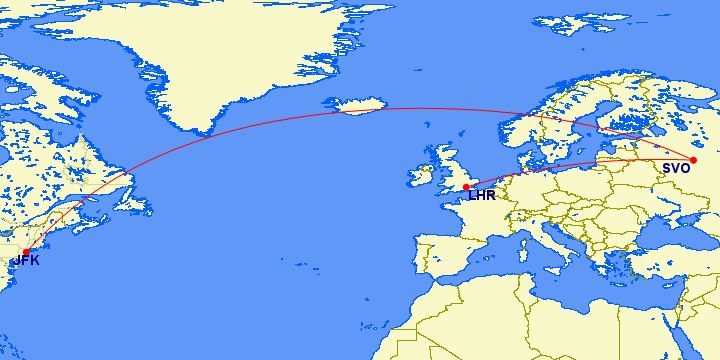 767-300: 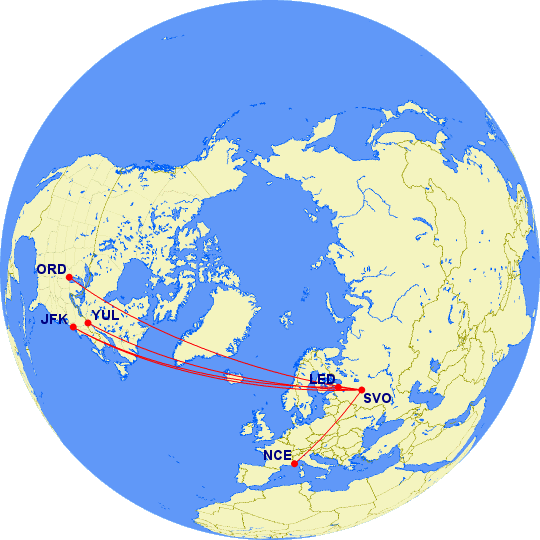 IL-96:  IL-62M: 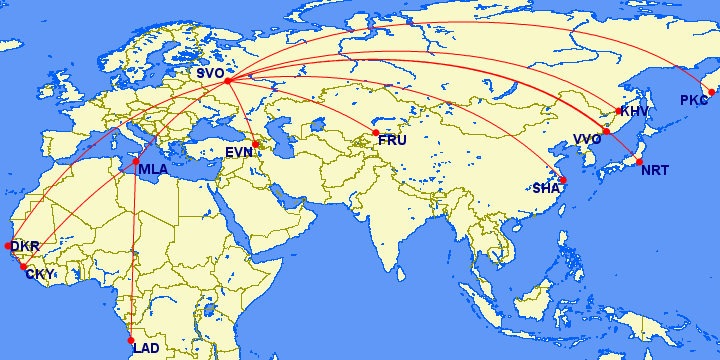 A310-300: 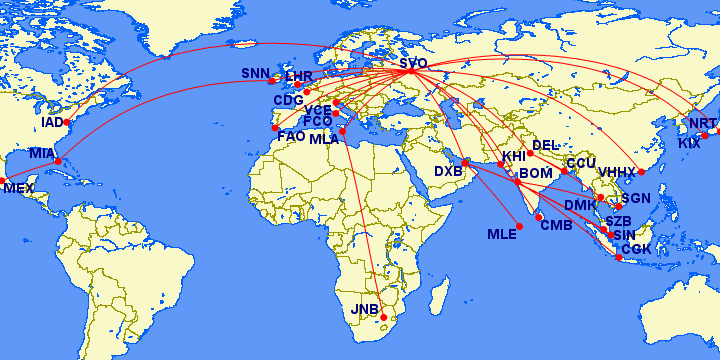 IL-86:  Tu-154M: 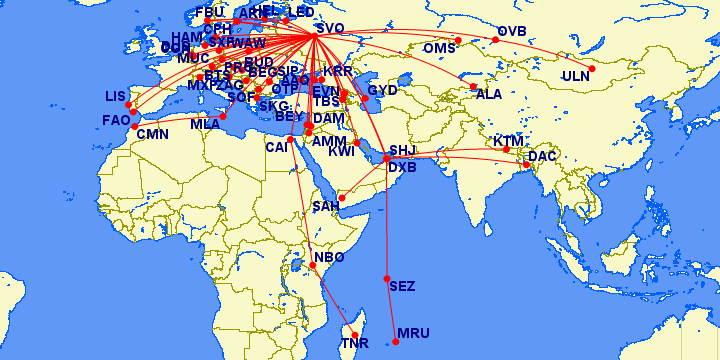 Tu-154B-2: 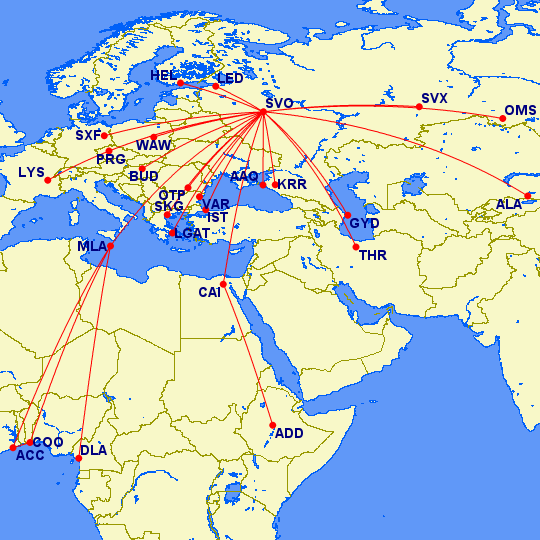 737-400: 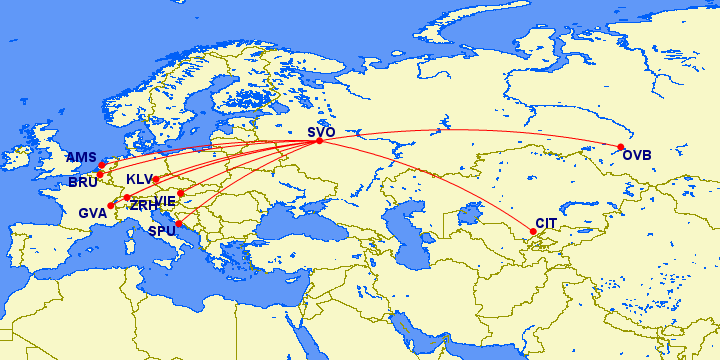 Tu-134B: 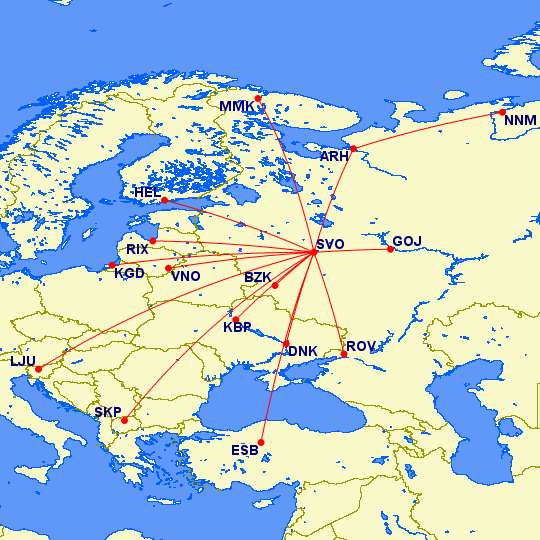 Tu-134A: 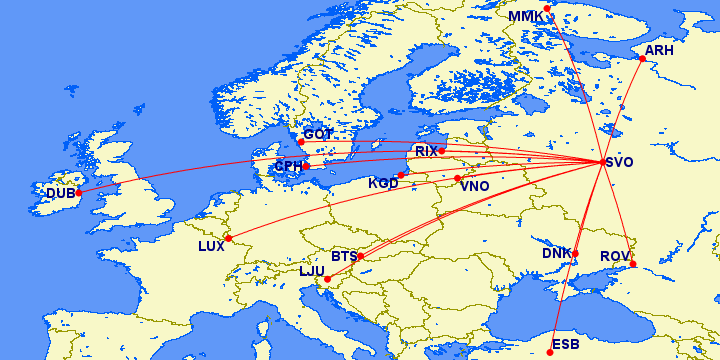 YAK 42 Charters:  Download Aeroflot 1998 v3 Flightplans Here Download Aeroflot 1998 v3 Flightplans Here |
|
|
|
Post by Nilsfr91 on Dec 29, 2022 7:45:02 GMT -5
//Air France 1998 v3 (28DEC22; Adds many livery variations by Micheal Pearson and Nils Gosselin, added some additional aircraft including A340s and A319s, added GE 767-300s and 747-200SUD, re-ordered aircraft list for better AI parking and easy installation of future livery variations, changed cruise speeds to AIG standard, added FS9-P3Dv3 and P3Dv4+ versions, repaint links updated) Air France (1933 - Present) IATA: AF ICAO: AFR CALLSIGN: Air France (You may also use AFR and\or AFRX for the following airlines) Air France operated by Air Djibouti (1998-1999) IATA: AF ICAO: DJU CALLSIGN: AIR DJIB Air France operated by L'Aeropostale (1997-2001) IATA: AF ICAO: ARP CALLSIGN: AEROPOSTE FRANCE Air France operated by Gill Airways (1998-2002) IATA: AF ICAO: GIL CALLSIGN: GILLAIR Air France operated by Air Littoral (1986-2003) IATA: AF ICAO: LIT CALLSIGN: AIR LITTORAL Air France operated by Brit Air (1986-2015) IATA: AF ICAO: BZH CALLSIGN: BRITAIR Air France operated by Regional Airlines (1997-2009) IATA: AF ICAO: RGI CALLSIGN: REGIONAL EUROPE Air France operated by Jersey European Airways (1997-2005) IATA: AF ICAO: JEA CALLSIGN: JERSEY Air France operated by Eurowings (1997-1999) IATA: AF ICAO: EWG CALLSIGN: EUROWINGS Air France operated by CityJet (1997 - Present) IATA: AF ICAO: BCY CALLSIGN: CITY-IRELAND Air France operated by Proteus Airlines (1996-2004) IATA: AF ICAO: PRB CALLSIGN: PROTEUS Air France operated by Air Guadeloupe (1995-2001) IATA: AF ICAO: AGU CALLSIGN: AIR GUADELOUPE Air France is the national carrier of France, based in Paris CDG and ORY, and is one of the largest carriers in Europe. The airline was founded shortly before WWII as the union between Air Orient, Air Union, Compagnie Générale Aéropostale, Compagnie Internationale de Navigation Aérienne (CIDNA) and Société Générale des Transports Aériens (SGTA) after a massive merger. With France having territories all across the globe, Air France from the very beginning was constantly expanding with the latest in long-range aircraft to reach points in the Pacific, the Caribbean, Asia, and Africa. Through the 1940s and 1950s, Air France added the latest props and turboprops like the Lockheed Constellations and Vickers Viscount, and joined the jet age in 1960 with the 707 and Caravel. In the 1970s, Air France was one of 2 customers for the world's first supersonic transport(SST), Concorde, taking roughly half of the aircraft with the rest going to British Airways. In 1988, Air France became a very early operator of the A320-100, with Airbus being a French company, and Air France historically was among the first to operate all Airbus types, starting with the A300. Air France also operated most Boeing aircraft, flying most variants of the 727, 737, and 747. Later, 767s and other Boeing jets would join the fleet. Air France merged with long-haul rival UTA in 1990, and with intra-European rival Air Inter in 1994. A subsidiary known as Air France Asie was started with 747s and A340s for flights to Taiwan, but this was discontinued by 1997 with the end of flights to TPE. In 1998, Air France was huge and contracting flying to many operators from several nations and operating with many livery variations. Several aircraft were given "World Cup 1998" decals across the fuselage, with different countries represented by the image on either side of the aircraft. Air France also still had a few A320-100s and 737-200s in the old 70/80s livery(spotted by the stripes on the tail going all the way down to the base rather than there being a "gap" between the stripes and the base of the tail, titles also were different). Concorde only had a single scheduled daily flight between CDG-JFK, with a RON in JFK. However, I have included all 6 of the Air France Concordes doing realistic charters of the era, including a visit to GIG via MIA/TPA for the 1998 World Cup and 2 different around-the-world charters. This package also includes all the regional carriers and affiliate airlines operating Air France flights in 1998, which includes a Caribbean operation with 2 mainline 737-300s and an ATR-72 operated by Air Guadeloupe. The regional carriers had a variety of liveries as well, with some having "house" colors with their own titles(with 2 liveries in some cases like Brit Air) while Air France was in the process of having these carriers transition from the "Air France Air Inter" livery of the early 90s to the mainline Air France colors. Many of the planes in full Air France colors being flown by regional subsidiaries had the name of the operating carrier in Air France font under the windows in the front of the aircraft. In addition, Air Djibouti operated an A310 for Air France to Djibouti and onward to JED, Belair-lle de France operated 727 flights with an Air France flight number(included in independent flightplans) while L'Aeropostale operated several 737-300s in full Air France colors. Interestingly, Air France was operating Fokker 100s mainline in 1998, having inherited them from Air Inter. These aircraft were transferred to Regional Airlines in 1999. Air France was no doubt one of the most eclectic carriers at the time! Boeing 777s had just joined the fleet in small numbers, but the airline was not yet flying A330s, despite Air Inter having flown the A330-300 prior to the merger. Air France would go on to join the SkyTeam alliance, and in 2003, merge with KLM to form Air France-KLM. Air France was later an early operator of the Airbus A380, but the aircraft were retired in 2020 due to the COVID-19 pandemic. Air France today is still a huge global airline with a modern fleet. Don't forget to download Belair-lle de France to complete Air France! And note that the aircraft.cfg is set up as "[livery](Operator)", ask here if you have any questions. Also keep in mind that, again, only some A320-100s and 737-200s still had the old livery with the stripes going all the way down to the base of the tail, all other planes should have a gap between the stripes and the base of the tail to represent the new colors. Also, note that Air France was the only major airline in the OAG that listed every regional flight as mainline and did not provide a legend as to which flight numbers were operated by which affiliate airline. As such, for example, you might see mainline Air France Fokker 100s flying routes flown by Gill Airways or vice versa. This also means that Air France 737-300s were not differentiated from L'Aeropostale 737-300s. Why Air France decided not to break down its affiliates, I am not sure. I was able to make plenty of educated assumptions like LCY flights being flown by Cityjet and whatnot, but I apologize if you find any inaccuracies, I did the best I could. Please give Concorde "ASST, AFR" parking codes please to allow for proper parking in CDG and JFK. Besides the special liveries, some A320s and 737-200s are still in the old 80s livery in these plans and I have now included the few ex-Air Inter aircraft that still wore the "Air Inter Europe - Air France" titles in 1998. I have tried to name the paints by Nils after the appropriate repaint, but Ttools wouldn't compile with the 1999 special A319 and the 1998 world cup sticker 777 as the titles were over 100 characters, so I had to shorten them. Be careful for that. It'll take some time to install all these planes, but then France will look amazing. Some aircraft have long ground times in Paris like real life to get the fleet size right and should populate the hangars nicely. Special liveries are needed, but Raphael Rodrigues has recently re-started that project years later (he had already finished roughly 25% of the World Cup liveries). The Air Djibouti A310, some of the Fokkers, and some Air Littoral paints are also needed. Most other repaints are done thanks to Ranmori Scythe, Nils Gosselin, and Micheal Pearson. The following repaints are available: FAIB 747-400 fleet by Nils Gosselin: drive.google.com/drive/folders/1qaVxea4eDwKauZF7I_Okd7_JB1-Q-JrrFAIB 747-300M fleet by Nils Gosselin: drive.google.com/drive/folders/1ZX8Y5a1LtMR7rBZ4GI-VenMV-dPeD4TTFAIB 747-200 fleet by Nils Gosselin: drive.google.com/drive/folders/1PqWUpanstzgwqDwkr-y3rCfzZIIWQkHAFAIB 747-200 fleet by Micheal Pearson (FSX Native): drive.google.com/drive/folders/1Pc-AOrPy1RFnHR4BLKInde80UmAfLED1FAIB 747-100 fleet by Nils Gosselin: drive.google.com/drive/folders/1Qs6sOSmd2TGEWchrvGmZwWcrXO3qCVIGFAIB 747-100 fleet by Micheal Pearson (FSX Native): drive.google.com/drive/folders/1Pc-AOrPy1RFnHR4BLKInde80UmAfLED1FSPX A340-300 fleet by Nils Gosselin: drive.google.com/drive/folders/1iyknb-BeoavJUN5zSfvc4yoIMN2dHe1RFSPX A340-200 fleet by Nils Gosselin: drive.google.com/drive/folders/1ceYU4ACdUXdFMoq7JScj0pknrITWxVpjFSPX A340-200 fleet by Micheal Pearson: drive.google.com/drive/folders/1Pc-AOrPy1RFnHR4BLKInde80UmAfLED1FSPX 777-200 fleet by Nils Gosselin: drive.google.com/drive/folders/1U3x3Sj24ra02j4n25wjbMVGFTLmDNab2TFS 777-200 (paint over Skyteam logo for 1998; FS9 Native): library.avsim.net/search.php?SearchTerm=ai772afr.zip&CatID=root&Go=SearchFSPX 767-300 fleet by Nils Gosselin: drive.google.com/drive/folders/1JiUo7b7ZfY6xUJJpQAb3wNSkp7roiReoFAIB 767-300 fleet by Micheal Pearson: drive.google.com/drive/folders/1Pc-AOrPy1RFnHR4BLKInde80UmAfLED1TFS A310-300\200: www.juergenbaumbusch.de/?p=11948FSPX A321\320\319 fleet by Nils Gosselin: drive.google.com/drive/folders/1j4z6XQOx525lJs1gXmQgmBm9hYLLJLOMFAIB A321 fleet by Nils Gosselin: drive.google.com/drive/folders/149Yi9MAaygLc4O3AEP7146USfvXbOJ0hFAIB A320 fleet by Nils Gosselin: drive.google.com/drive/folders/1ZPxp7p0JoxDC47tI3eW4hSdvzQSb1hMWFAIB A320 Air Inter Europe by Nils Gosselin: drive.google.com/drive/folders/1j0STCe9NHXyL1xao1BCkxXnRFyndDXD8FAIB A319 fleet by Nils Gosselin: drive.google.com/drive/folders/1ZLp7NOmz4x0h8dm8-B1ym9v3IiGWBxngFAIB A319 Air Inter Europe by Nils Gosselin: drive.google.com/drive/folders/16duN8Vkfwc6vQVYW5MuYEBd_f43kmgsKFAIB 737-500 fleet by Nils Gosselin: drive.google.com/drive/folders/1kfL_BiBRqylj4-sleKeNxbCIWmgMcg5oFAIB 737-300 fleet by Nils Gosselin: drive.google.com/drive/folders/1-MPyIx1ltlLqqHkh5F7F8SxukkQslNK1FAIB 737-300 operated by L'Aeropostale by Jonathan Alba\Henrique Martins: drive.google.com/drive/folders/12UTT1XnfBM3uM6eE2Fu-V8tdGyu4-hEp?usp=sharingFAIB 737-200 fleet by Nils Gosselin: drive.google.com/drive/folders/1Ci-A5KLSbuvSXVCkOfriGaNT_KZiR7--FAIB 737-500\737-300\737-200 (FS9 Native): library.avsim.net/search.php?SearchTerm=air_france_uta_fleet_1992-93.zip&CatID=root&Go=SearchAIA Fokker 100 by Nils Gosselin: drive.google.com/drive/folders/1Q4KWHYuQQfPDlWq3nOrcr94JhH_x9jBkAIA Fokker 100 Air Inter Europe by Nils Gosselin: drive.google.com/drive/folders/1rYWA7DiX6r-aJj3NKgt3Zg0bY1NCgvi1AIA Fokker 70 (paint over engine logos and "Regional" titles; FS9 Native): library.avsim.net/search.php?SearchTerm=aif70rae.zip&CatID=root&Go=SearchRegional Fleet; FMAI BAe-146-100\200\300, AIM ERJ-145\CRJ-200, JBAI Do328, OSP ATR72\42, TFS Saab 200, HTAI B1900D as well as a 2nd version of the L'Aeropostale operated FAIB 737-300 (FS9 Native): library.avsim.net/search.php?SearchTerm=air_france_regionals_pack_1998.zip&CatID=root&Go=Search747-400 Combi: 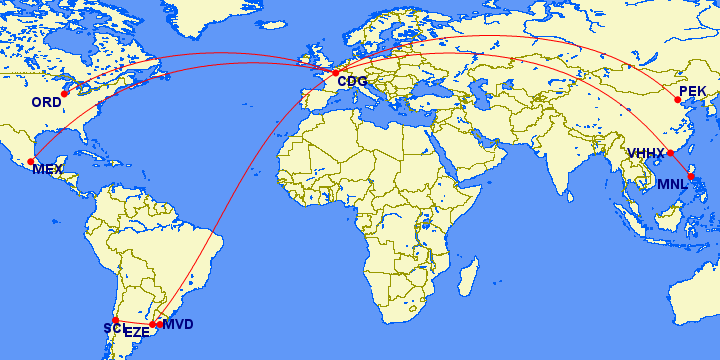 747-400: 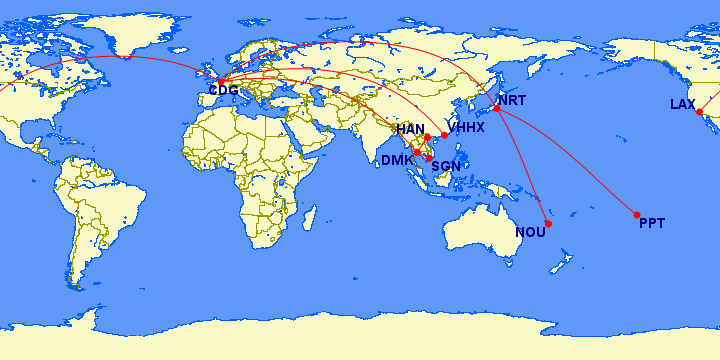 747-300: 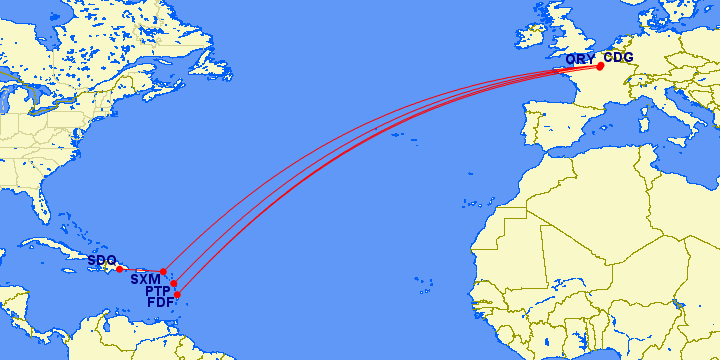 747-100\200: 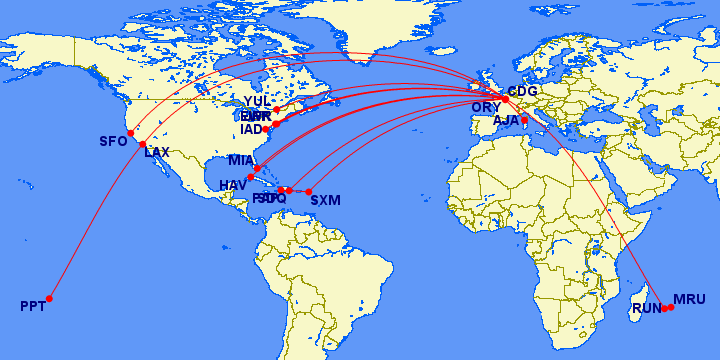 A340-300: 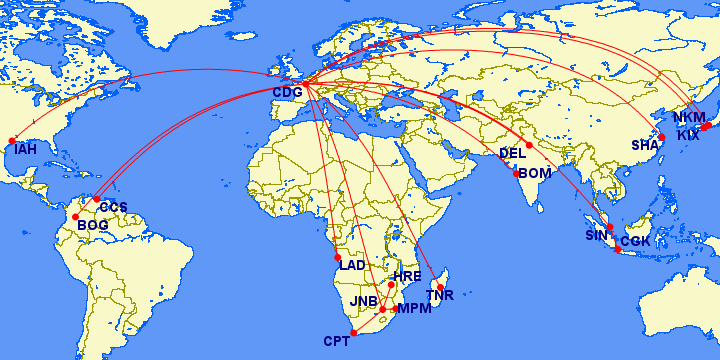 A340-200: 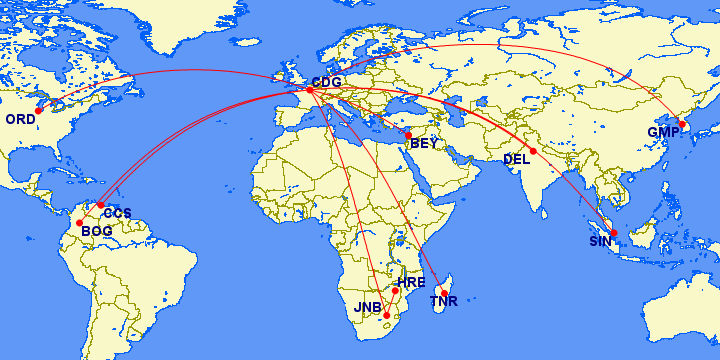 777-200:  767-300:  Concorde scheduled flights: 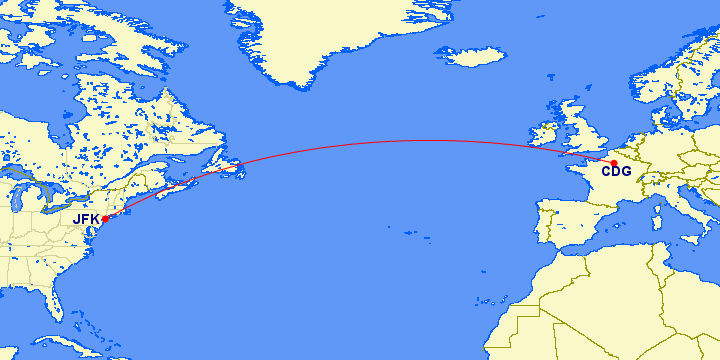 Concorde charters:  A310-200\300: 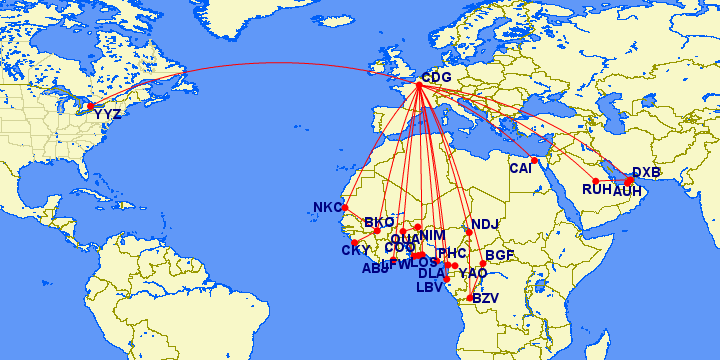 A310-300 operated by Air Djibouti: 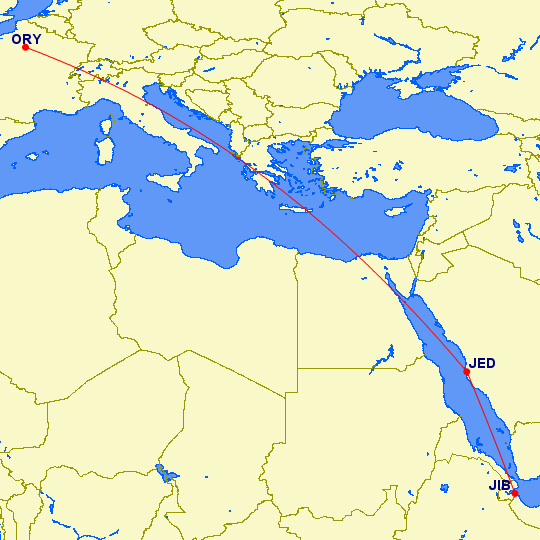 A321: 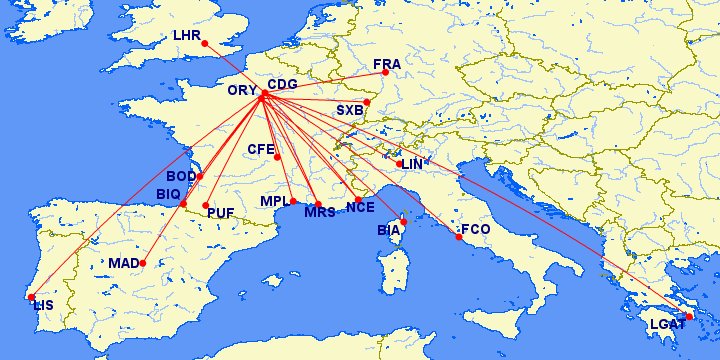 A320-100\200: 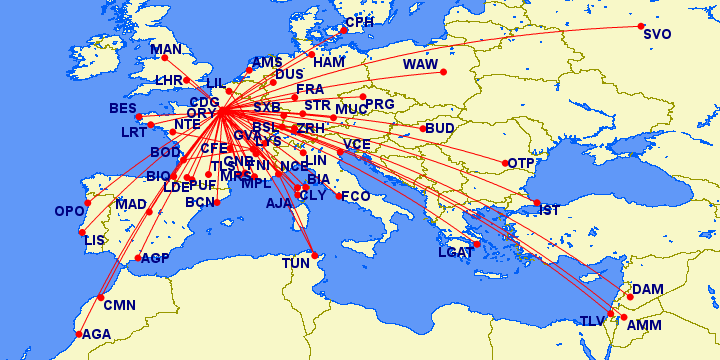 A319: 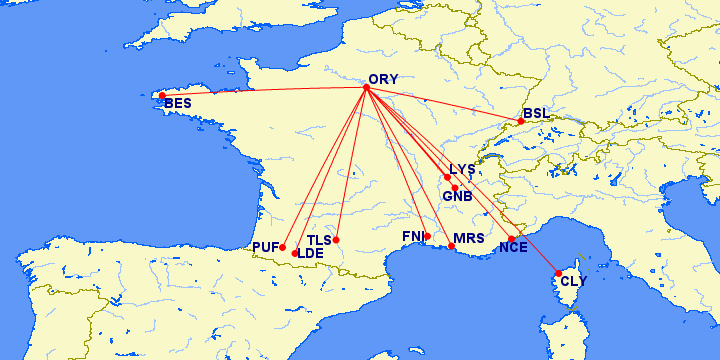 737-500: 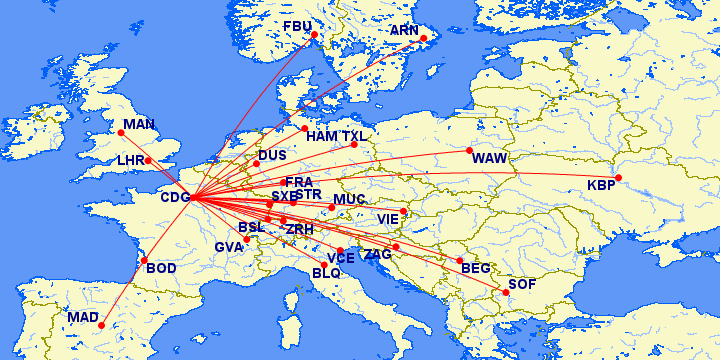 737-300 (includes flights operated by L'Aeropostale): 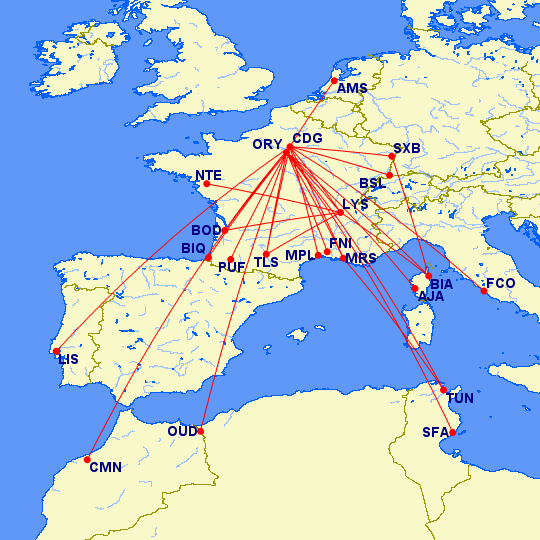 737-300 Caribbean:  737-200: 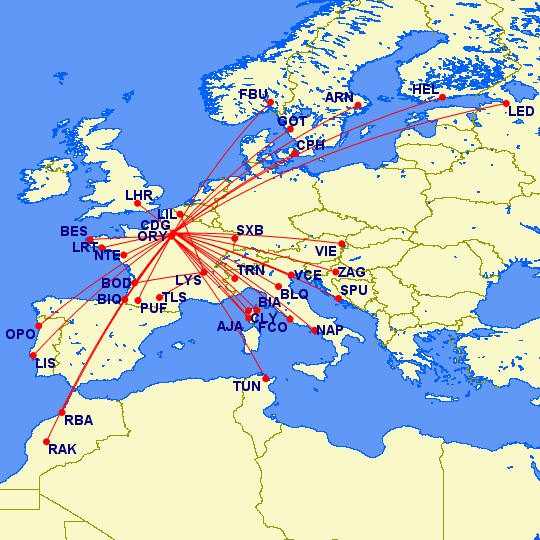 Fokker 100 (includes flights operated by Gill Airways): 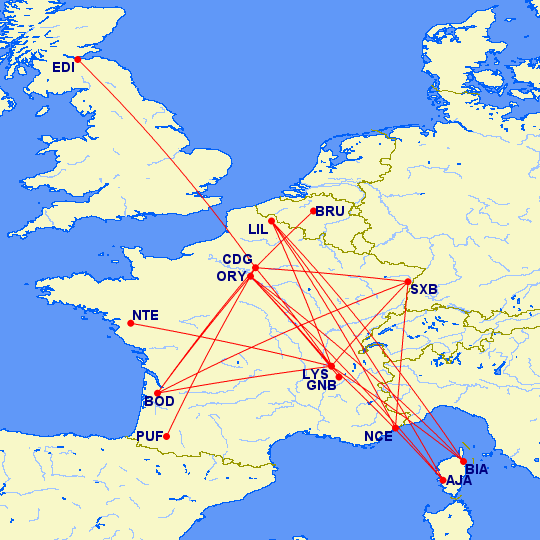 Fokker 70 operated by Air Littoral:  BAe-146-100\200\300\Avro RJ70\85\100 operated by Jersey European Airways\CityJet\Eurowings: 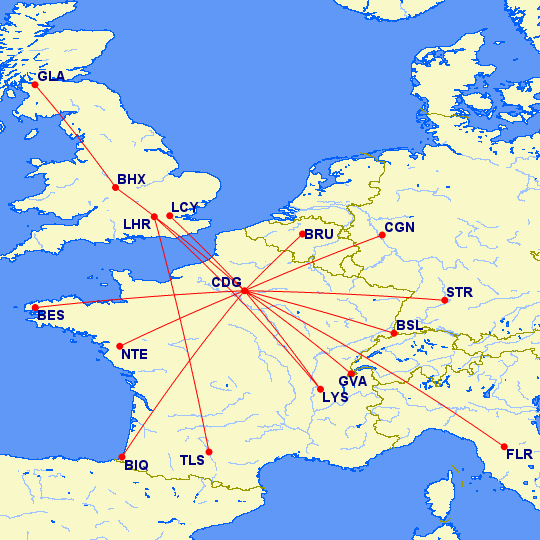 ERJ-145 operated by Regional Airlines: 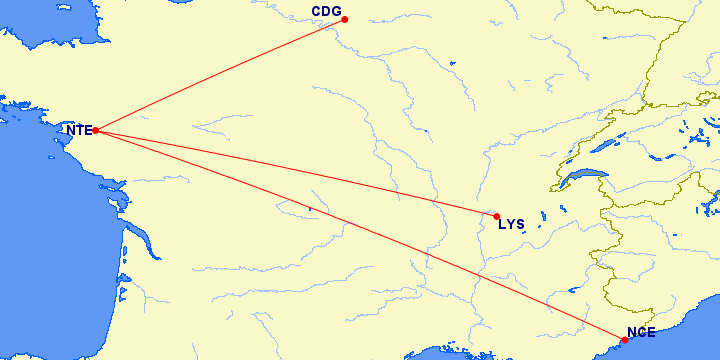 CRJ-100\200 operated by Brit Air: 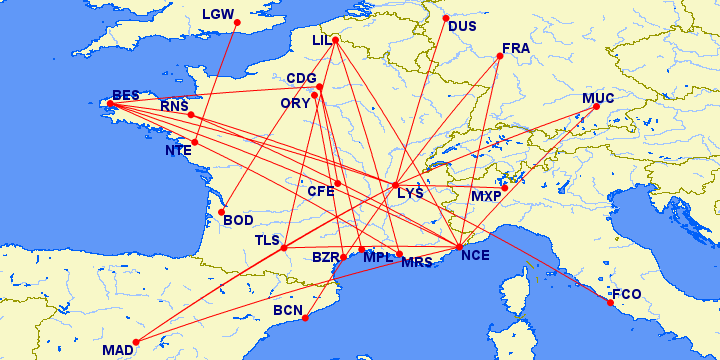 ATR-72 operated by Brit Air: 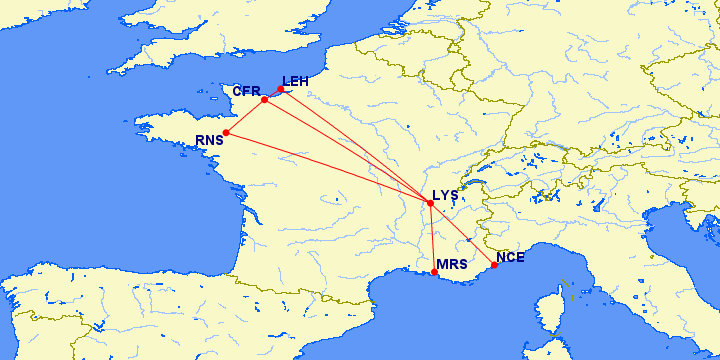 ATR-72 operated by Air Guadeloupe:  ATR-42 operated by Brit Air: 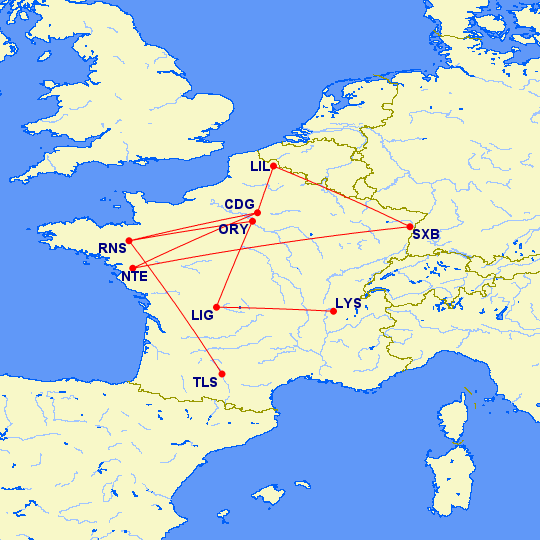 ATR-42 operated by Gill Airways: 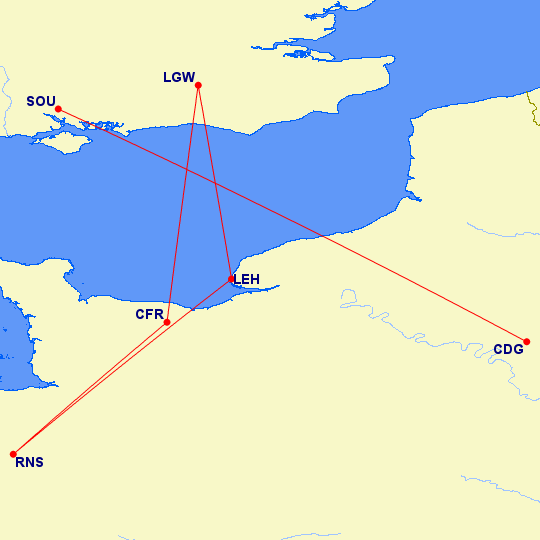 Saab 2000 operated by Cityjet\Regional Airlines: 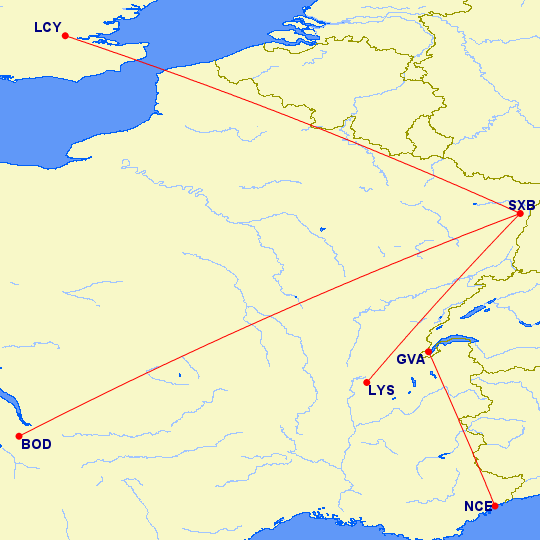 Do-328 operated by Proteus: 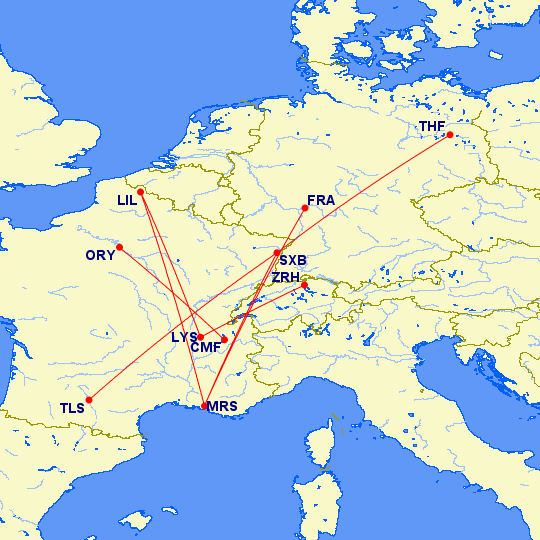 B1900D operated by Proteus: 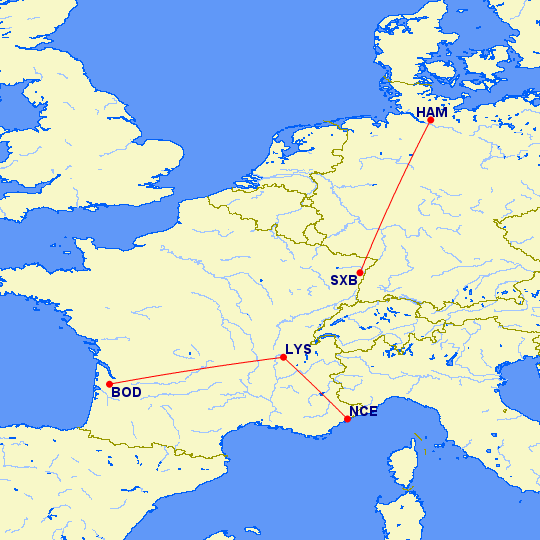 Download Air France 1998 v3 Flightplans Here Download Air France 1998 v3 Flightplans HereI've done some BritAir liveries for the CRJ's, but I'me planning on making some Airlinair paints and Air Littoral ones as weel since Air Littoral got absorbed into Airlinair and some ATR's kept the Air Littoral livery well into the 2000's. |
|
|
|
Post by chasensfo on Dec 29, 2022 8:16:15 GMT -5
\\Aerosweet 1998 v2 (29DEC22; Change cruise speeds to AIG standard, new repaint links) Aerosweet (1994-2013) IATA: VV ICAO: AEW CALLSIGN: AEROSWEET Aerosweet, later known as Aerosvit, was a Ukrainian international airline which was based at Boryspil International Airport (KBP) in Kyiv, Ukraine. The airline first started operating in 1994 in cooperation with Air Ukraine flying An-24RV turboprops on leisure routes in the region. 737-200s were leased a short time later for expansion to Moscow, and later, several other East European and West Asian nations as well. In 1996, Aerosweet joined IATA and began to publish schedules in the OAG. By 1998, the airline was flying 3 737-200s across Europe as well as a pair of An-24s regionally. The late 90s network stretched as far as Kazakhstan(ALA) and Israel(TLV). The following year in 1999, the airline would change its name to Aerosvit, retaining the same livery but changing the titles. Aerosvit would outlive Air Ukraine and become the largest airline in Ukraine by the time it shut down in 2013 as a direct result of the ongoing war in the Donbas region. Flightplans by Vadim Stepanyuk. All repaints are completed by Raphael Rodrigues: FAIB 737-200 (includes v1 flightplans): library.avsim.net/search.php?SearchTerm=aerosweet_1998.zip&CatID=root&Go=SearchCIS An-24RV: library.avsim.net/search.php?SearchTerm=cis_an-24rv_aerosvit_1998.zip&CatID=root&Go=Search737-200:  An-24RV: 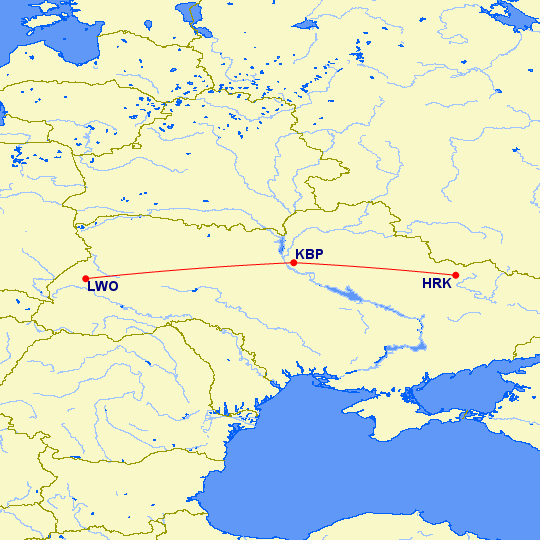 Download Aerosweet 1998 v2 Flightplans Here Download Aerosweet 1998 v2 Flightplans Here |
|
|
|
Post by chasensfo on Dec 29, 2022 9:28:37 GMT -5
\\Shorouk Air 1998 Shorouk Air (1992-2003) IATA: 7Q ICAO: SHK CALLSIGN: SHOROUK Shorouk Air was an Egyptian leisure charter airline, based in Cairo (CAI), which was a joint venture between Egyptair and Kuwait Airways. Initially, the carrier was formed in 1991 as Egyptian-Kuwait Air Services Company, but the name of the carrier was changed to Shorouk Air in 1992 before the start of operations. A pair of A320s were used for much of the airline's history, with the carrier adopting a seasonal operation where the A320s were commonly leased out to other carriers such as Onur Air and Albanian Airlines for months at a time during the off-peak holiday season. Flights mostly connected points in France, Spain and Germany to leisure cities in Egypt, while also connecting Egyptian and Kuwaiti holidaymakers with Mediterranean and Black Sea resort cities. A 3rd A320 joined the fleet in 1994, and a newly built 757-200 had been completed by Boeing that same year but was ultimately not taken up by the carrier. A 4th A320 was briefly leased the following year in 1995. In late 1997, an A320 was leased from Onur Air wearing the full colors of the failed US carrier Leisure Air, which had gone out of business in 1995, but with Shoruk Air titles. Another A320 was leased in late 1998 or early 1999 in an albino livery with an Irish registration, bringing the total to 4 aircraft for the late 1990s. In 2000, the carrier introduced a simplified livery with a white fuselage, and also settled on 4 permanent A320s rather than relying on frequently leasing aircraft. In July 2003, Eygptair and Kuwait Airways made the decision to shut down the carrier. I have made 1995 plans for this carrier already, and 2 of those aircraft are recycled here as the flying was more or less the same while the other 2 are all new focusing on areas not included in the 1995 plans. Destinations are all real, flight numbers, days of the week, and times are representative. The albino A320 and the Leisure Air hybrid are needed, but I have modification to Eduardo Villanueva's Onur Air\Shorouk hybrid FAIB A320 to represent the other 2 aircraft here: drive.google.com/drive/u/1/folders/18-fa51H13Urz8x-rI_zSB0dY-p2qQVFlA320 charters: 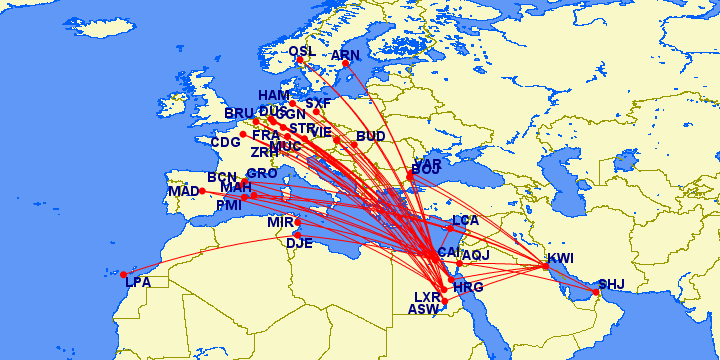 Download Shorouk Air 1998 Flightplans Here Download Shorouk Air 1998 Flightplans Here |
|
|
|
Post by chasensfo on Dec 29, 2022 9:49:52 GMT -5
\\Raslan Air Service 1998 Raslan Air Service (1996-2000) IATA: NONE LISTED ICAO: MWR CALLSIGN: RASLAN Raslan Air Service was an Egyptian regional airline, based in Cairo (CAI), which operated a lone Saab 340A. Information on this carrier is rather obscure, however, the carrier began operations in 1996 with an ex-Crossair Saab 340A which was curiously painted into the basic American Eagle livery (despite not flying for that carrier), and all the Raslan Air Service ground support equipment was painted to match the American Eagle colors as well! It is unclear if this was to make it seem like the aircraft had just come from a reliable American carrier or if at one point American Eagle was due to acquire the aircraft but never took it up. It is unclear if Raslan Air Service was a scheduled carrier, but I did discover that they had one confirmed route running between CAI and Abu Simbel (ABS) via Aswan (ASW). The airline did not belong to IATA. Flights ended in July of 2000 and the aircraft was stored and ultimately scrapped. With the information available on this carrier, I have created a representative flightplans with a daily CAI-ABS-ASW route and used photo evidence to try and get the times roughly accurate. Flight numbers are representative, and I will update these plans in the future if a schedule or better info is discovered. The repaint is needed, here is a photo of the Saab 340A in ASW: www.airliners.net/photo/Raslan-Air/Saab-Fairchild-SF-340A/59139?qsp=eJwtjTsKwzAMhu%2BiuUspdMjYCzRDl47CEnGIGxlJ0JqQu0c12T7%2B5wZJVuefv1plGMAYNWW4QEXFj8GwwcLtK0rBoGgF13BN1B8tFELnMYvLpFgz0zv6p/9UYv1H2FIfnOLgGsA6dobbPXSarRbsW%2Bw4F9j3Ayt5Mnk%3DSaab 340: 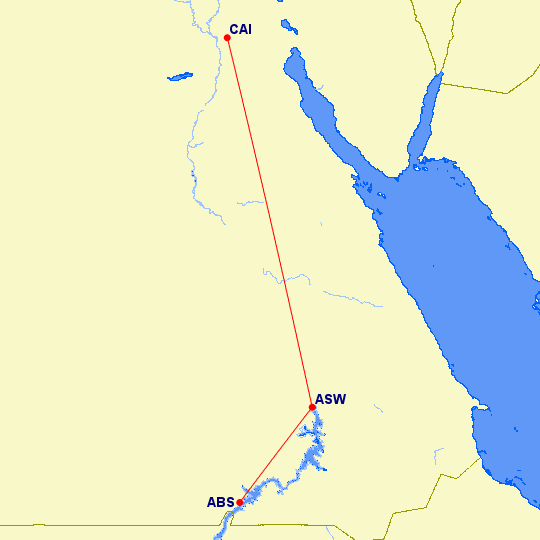 Download Raslan Air Service 1998 Flightplans Here Download Raslan Air Service 1998 Flightplans Here |
|
|
|
Post by sakura on Dec 29, 2022 10:51:59 GMT -5
Thank you for Yak 42 Chase, I always loved that dumpy little thing. Too Bad the Yak 40 was already gone by that time. Tri Jets forever.
|
|
|
|
Post by chasensfo on Dec 29, 2022 10:56:51 GMT -5
\\National Aviation Company 1998 National Aviation Company (1986 - Unknown) IATA: NONE LISTED ICAO: GTY CALLSIGN: GHANAIAN National Aviation Company is an Eygptian cargo and logistics company, based in Cairo (CAI), which frequently leased planes from various carriers as needed to cover shipment contracts. In 1996, the airline briefly operated its own equipment after acquiring en ex-Egypt Air and ZAS Airlines 707-300C, converted to be a freighter. Until 1999 or 2000, the carrier operated the 707 on a cargo route between Accra (ACC) and Ostend (OST) via CAI in cooperation with Ghanaian interests, hence the callsign. There is no evidence of other routes operated, but photo evidence suggests that the flight operated regularly into OST. By 2000, the 707 was repainted into an albino livery and passed onto Air Memphis. It is unclear if National Aviation Company ever operated its own aircraft again, though they did lease IL-76s and An-12s from various carriers as needed in the 90s and 2000s. Information on the fate of this company is also convoluted, but interestingly, Egyptian and Ghanian authorities again began working on a joint-owned cargo venture in 2020. Photo and other online evidence suggest that the flight would normally arrive in OST in daylight, sit all day, and depart at night. So the schedule is built around that with flight times and numbers representative. These plans represent the carrier from 1996 to 2000. Repaint is needed as far as I can tell. www.airliners.net/photo/National-Aviation/Boeing-707-366C/1626973/L?qsp=eJwtjb0OwjAMhN/FMywgMXTkBejAwmjFp6aikMg2P6Hqu5MUtrv77LuZQro73n4uGdSRgTVE2lBm5ZtRN9MV5ZVUrNHHlp%2BfSi2pH0tNhB19TJ4G5Rwhl/r/5ycVaDuBhbVwaAO7JqH9z%2B0P1cpoeeK1Dc7jRMvyBXiWMqM%3D707-300C: 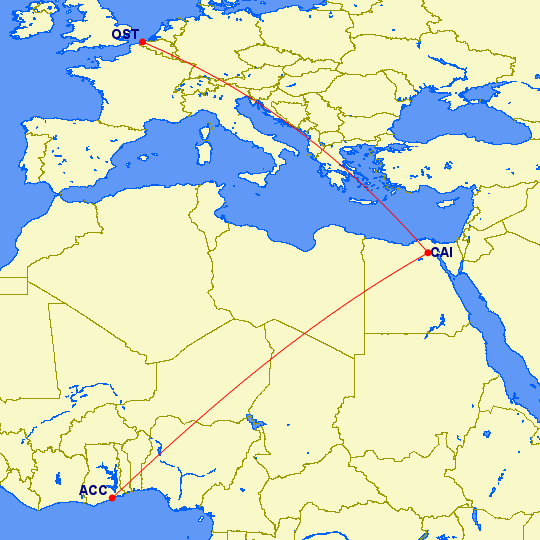 Download National Aviation Company 1998 Flightplans Here Download National Aviation Company 1998 Flightplans Here |
|
|
|
Post by chasensfo on Dec 30, 2022 21:28:08 GMT -5
Talk about a pain in the ass, Alaska took over 2 years! The schedule just didn't add up...both my September 1998 OAG and an October 1998 schedule had so many random holes. Redding (RDD) for example had a huge offset in arrivals vs departures, a lot of the Saturday-only Mexico flying didn't fit anywhere, the days of operation of the Russia flying AND some of the times didn't make logical sense at all, a lot of the 737/MD80 data didn't match up, tons of extra aircraft which took a LOT of creative consolidation to figure out. VARIG, African carriers, Saudia, etc were like this but Alaska in this major West Coast expansion phase was sure...not based on weekly aircraft rotations, that is for sure lol. There are still issues I will line out below, but I'm done with this crap LOL so here it is. These plans are extremely different than the 1993 ones. \\Alaska Airlines 1998 Alaska Airlines (1932 - Present) IATA: AS ICAO: ASA CALLSIGN: ALASKA Alaska Airlines Commuter operated by ERA Aviation (1987-2009) IATA: 7H ICAO: ERH CALLSIGN: ERAH Alaska Airlines Commuter operated by Harbor Airlines (1998-2001) IATA: HB ICAO: HAR CALLSIGN: HARBOR Alaska Airlines Commuter operated by Horizon Air (1981 - Present) IATA: QX ICAO: QXE (Also use ASAX for parking) CALLSIGN: HORIZON AIR Alaska Airlines Commuter operated by Peninsula Airways\Pen Air (1991-2012) IATA: KS ICAO: PEN (later changed to NLA) CALLSIGN: PENINSULA Alaska Airlines Commuter operated by Reeve Aleutian Airways - RAA (1984-2001) IATA: RV ICAO: RAA CALLSIGN: REEVE ARCO Oil operated by Alaska Airlines (1985-2001) IATA: AS ICAO: ASA CALLSIGN: ALASKA Alaska Airlines is a major US Airline, and one of the oldest airlines in the world operating today, based in Seattle (SEA) with a major hub in Portland (PDX) and smaller hubs in Los Angeles (LAX), San Francisco (SFO), San Diego (SAN), and San Jose (SJC). Alaska Airlines was founded in 1932 by Linious "Mac" McGee as McGee Airways. Due to its extreme northerly longitude, Alaska sees extreme weather with portions of the state not seeing the sun for months in the winter while much of the state sees the sun most of the day at the height of summer. During the winter, aircraft become the only reliable way to resupply many communities across the region. McGee Airways was initially provided as an airline for these communities, first operating small Stinson aircraft before expanding to add larger transport props like the Lockheed Vega and Lockheed 10 Electra. 2 years late in 1934, McGee Airways was sold to Star Air Service, who became Star Air Lines after the merger. The carrier was now the largest in Alaska, and changed its name in 1944 to Alaska Airlines. By the late 1940s, new props like the DC-3, DC-4, and DC-6 allowed expansion which eventually stretched into the Pacific Northwest region of the United States from 1951. The post-WWII world offered large numbers of cheap surplus aircraft, and aircraft such as the C-46 Commando and Lockheed Constellation were added to the fleet. By now, Alaska was operating scheduled flights, charter flights, and cargo flights all regularly and with little competition in most markets. In 1961, the carrier became one of the first to join the jet age with new "Golden Nugget" Convair 880 jets. 727s joined the fleet soon after, followed by other aircraft like L-100 Hercules props for cargo flights, various Convair models, and DHC-6 Twin Otters. 2 rival carriers, Cordova Airlines and Alaska Coastal Airlines, were both acquired by Alaska Airlines 1968. Still, by the 1970s, the competition was becoming more of an issue as Wien Air Alaska expanded to offer a network across the Western United States while Alaska Airlines remained largely a regional carrier operating only as far into the continental US as Portland (PDX) while the carrier also offered limited services to the Far East of Russia with 727s. Meanwhile, Reeve Aleutian Airlines had also encroached on some of Alaska's regional trunk routes, namely between Anchorage (ANC) and Dutch Harbor (DUT) in the Aleutian Islands. Boeing 707s briefly joined the fleet, but by the 1980s, Alaska Airlines settled on 727s for its jet fleet. From 1977, a 727-100 was operated on behalf of ARCO Oil taking ARCO employees to and from airfields near oil fields in Alaska. In the 1980s, some 727-100s were leased from United Airlines as were some 727-200s from Braniff, all operated in hybrid liveries, to allow for expansion as far south as San Francisco (SFO). Meanwhile, another early 80s carrier named Horizon Air had started its own route down to SFO via Klamath Falls (LMT) with Fokker 27s. As Horizon Air and Alaska Airlines both grew with PDX becoming an important hub for both, Horizon Air became the first major commuter partner for Alaska Airlines, though both carriers kept their separate identities for some time. In 1984, Wien Air Alaska shut down, and Mark Air quickly grew into Alaska's largest competition up in Alaska. Meanwhile, Cascade Airways was growing out of SEA and PDX in direct competition with Horizon Air. Alaska Airlines began codesharing with Reeve Aleutian Airlines and another local service carrier called ERA Aviation. Horizon Air attempted to acquire Cascade Airways in 1985, but the deal fell through and Cascade Airways failed soon afterward. By now, Mark Air had added a large fleet of 737s to supplement the regional and cargo aircraft it was using in Alaska, and in the late 1980s, the carrier began rapidly expanding beyond the Pacific Northwest with a network that was stretching to New York (LGA\EWR) and Washington DC (DCA) by 1995. Around the same time, the post-deregulation US Airline industry found itself in a merger frenzy, and carriers such as Continental, American, and USAir were rapidly acquiring other carriers and going to war with United Airlines, Delta Airlines and new entrant Southwest Airlines in a blood bath battle for market share in the Western US that historically had much less competition than the Eastern half of the nation. Alaska Airlines used this opportunity to acquire a Long Beach (LGB)-based start-up carrier called Jet America in 1987. With the acquisition of Jet America, Alaska's 727s and gravel-kit equipped 737-200s were joined by Jet America's 10 MD-80s and pair of 707-300Cs. The 707-300Cs were only operated for some charters, if at all, before being disposed of, however. Alaska quickly opened an expansive West Coast network adding point-to-point routes connecting various cities in California with one another along with its SEA and PDX hubs. Orders were placed for about 2 dozen more MD-80s while a larger number of 737-400s were ordered a few years later. To commemorate its California presence, Alaska Airlines applied actual sunglasses (not painted on) to the signature Eskimo on the tail of some of its MD-80s between 1987 and 1988. By the early 1990s, Alaska wound down much of the point-to-point flying and began to abandon LGB in favor of a Los Angeles (LAX) hub while most routes to other California airports became multistop North-to-South routes usually terminating in SEA, PDX, or ANC. Flights to Mexico were also launched from several cities in California, and 727s began being retired as new MD-80s arrived. Meanwhile, Horizon Air was expanding with DHC-8s and Metroliners and a new partnership was formed with Peninsula Airways, an Alaskan local service carrier. Mark Air failed in 1995, while Continental and USAir all but abandoned the West Coast, and Delta and American scaled back their operations outside of LAX significantly, with American closing hubs in SFO and San Jose (SJC) and Delta ending most point-to-point flying in favor of routing passengers via SLC, LAX, and a new hub in PDX. Delta's PDX hub was mostly centered around banks to connect passengers onto and off of L-1011-500s and MD-11s headed to and from Asia, and not many flights directly competed with Alaska and Horizon other than a few trips per day. As such, Alaska and Horizon ended up with the vast majority of new gates that opened in PDX during the 80s and 90s. A 1993-introduced livery was quickly applied across the fleet, going fleetwide by the end of 1995. Horizon Air expanded to add Do328s and Fokker 28-1000s, both of which were only operated for a short time as the Fokker 28s were mostly sold to Canadian carriers by 1997 in favor of larger Fokker 28-4000s and the Do328s were quickly returned in favor of DHC-8 expansion. Horizon Air withdrew the Do328s and its Metroliners from service in late 1997 and stored the fleets in PDX where the carrier housed its maintenance facilities. By 1998, Alaska Airlines was a major player on the US West Coast and had expanded to offer a Vancouver (YVR) focus city with banks of flights to destinations across the Western US. The last 727s had left the fleet, while brand new Next Generation 737-700s would begin arriving in 1999. In the meantime, Alaska frequently accepted delivery of its last 737-400s. A codeshare agreement was signed with Oak Harbor (OKH) based commuter carrier Harbor Air to operate Cessna 208B Caravans out of the main passenger terminals in SEA and PDX for Alaska Airlines connections. Focus cities had grown into existence in SFO, SJC, SAN, and OAK. Some Mexico routes were now daily while many were still operated on Saturdays only. On hub-to-hub routes from PDX and SEA, Alaska was in fierce competition with RenoAir, Southwest Airlines, and Shuttle by United. Fares were very low, and Alaska had as many as 30 daily flights between SEA and LAX and ANC with about 20 daily flights between PDX and some major cities as well. Alaska had as many as 4 flights in a single hour between major cities, while the SEA-ANC flights ran through the night 24 hours per day, often departing minutes apart as most passengers were in SEA as a stopover headed to or from ANC from places like Mexico and California on multi-stop routes. With the aggressive scheduling, and the delays LAX, SEA, and SFO are prone to, the result was a disaster with hoards of planes holding for gates and routes extremely oversaturated not only by excess flights but also by very low airfares set by the carriers in the midst of a fare war. Most of these frequencies would be slashed immediately after the 9\11 attacks in 2001, around which time Alaska Airlines also ended its Russian flights which were operated with ground support from Aeroflot. Even in the late 1990s and early 2000s, some of the cities in Russia served by Alaska often had no fuel available and didn't even have restaurants and hotels open much of the year, nor did they have widespread electricity. The ARCO flying, which was last done by a 737-200, went away in 2001 when Phillips Inc bought the 737-200 and began operating it. Harbor Air failed around the same time, and Alaska elected to not replace the service lost to the smaller destinations served by Harbor Air. By the end of the 2000s, Alaska's 737-200 Combis were still going strong while Next Gen 737-700\800\900s, with Alaska having been the -900 launch customer, were becoming the mainstay of the fleet. Alaska began codesharing with many airlines in various alliances rather than joining one. The focus city and point-to-point routes again largely dried up in the lower 48 while SEA and PDX built up into major hubs. Horizon ditched the jets for a few years while adding DHC-8-400s, but CRJ-700s joined soon after the Fokkers were retired. The 2010s brought expansion across the United States to the Midwest, East Coast, and Florida while San Francisco (SFO)-based Virgin America was acquired in late 2016 to boost Alaska's presence in SFO, LAX, and JFK. The 2020 pandemic saw Alaska decide to reallocate most of the Virgin America assets to SEA, where Delta was now operating a large hub, rather than a massive SFO\LAX expansion. Today, Alaska is a member of the oneworld alliance and is in the process of retiring its ex-Virgin America Airbuses in favor of Boeing 737MAX jets. Horizon Air today is retiring the last of its Q400s in favor of an all-E175 fleet and saw much of its flying taken by rival SkyWest Airlines, who also operated E175s with a large Alaska Airlines feeder network. The very aggressive flight schedule and Saturday or Sunday-only nature of many Mexico flights resulted in most of them having to be manually patched in wherever they fit. I saved the ones I could, but some Mexico routes that are meant to be daily could not be operated as such without dedicating an aircraft to that route. The YVR hub was only active mostly for 1 big noon-time departure rush and the flights didn't seem to fit in with the schedule well. There were only a few daily SEA-YVR mainline flights, so I am not sure where these aircraft filtered into and out of the system as they would return back to YVR in the late afternoon and then I guess sit there the entire day? I saved the ones I could there as well, but many routes like SFO\PHX-YVR are not operated daily as they should be. The schedule produced over 20 extra 737-400s and MD-80s when first accurately compiled, and after many many months of resizing, I was able to represent almost all the once-weekly routes and least most or some of the daily odd-ball point-to-point routes by adding the few 737-700s which joined the fleet in 1999 and creating 2 extra MD-80s and 1 extra 737-400. These airplanes are segregated in case you wish to exclude them. BUT if you exclude them, know that you will lose many routes entirely. Given how it was very common for SFO-LAX alone in the Shuttle by United days of the late 1990s to cancel 20-40% of the flights on a given day, I can only conclude that Alaska anticipated regular Air Traffic Control cancellations and put out a schedule that was probably rarely fully operated with 30-ish SEA-LAX flights, 20ish PDX-LAX flights, and so on. Aircraft types are mostly accurate, but on some routes, there was conflicting info between 737-400s and MD-80s so I had to just do what fit best with a weekly sim schedule. I have broken down individual types of DHC-8s, Fokkers 28s, and DHC-6s to take advantage of current and future model variants. For Harbor Air, I was able to find out very little in the way of the short-lived Caravan operation for Alaska Airlines, and even after lots of research, I only was able to make a few of the tail numbers accurately. Also, the Harbor Air planes do 100+ weekly sectors which can cause problems in flight simulators. As I don't even know the proper fleet size, I will edit these in the future. For the Alaska Commuter carriers, ONLY the aircraft types used for Alaska services are included (as 100% of said aircraft types were indeed part of the Alaska codeshare). This means that the small Piper and Cessna Aircraft, amphibious aircraft, DC-3s, and others operated by the included carriers are not included and will be uploaded as independent flight plans for those carriers. Trans States LAX\SFO flights were operated in a joint codeshare with Northwest and USAir and are also independently available. Alaska Airlines operated regular 737-200C charter flights to the Red Dog Mine (RDB) and was operating regular charters from a few cities to Grand Junction (GJT) where Aspen (ASE)-bound pax were bused to that resort city as the airport isn't suited for 737s and MD-80s. Also included are Galbraith Lake Airport (GBH) charters flown by ERA Aviation's Convairs at the time. The ARCO flights were listed in the OAG, so I guess AS sold tickets on them too as they showed "73S" instead of "73M". All aircraft wore the independent colors of their operators, with the possible exception of the 737-200 operated for ARCO as I couldn't find a single photo of it before its sale to Conco Philipps. There were no special liveries in the fleet at the time. Some repaints are needed. Raphael Rodrigues has the Harbor Air Cessna Caravan done on the HTAI model but we seem to have misplaced it as he made it when I started the plans 2 years ago and we never installed it into our sims. Beyond that, none of the other missing repaints are in progress as far as I know. The following repaints are available: AIA MD-83 (FS9 Native): library.avsim.net/search.php?SearchTerm=aimd80as.zip&CatID=root&Go=SearchFAIB 737-700 (use non-winglet model): (Was painted by Kyle's AI Works but he took it down. I know him and will ask for permission to host as he takes down old paints once they're inactive) AIA 737-700 (use non-winglet model; FS9 native): www.flightsim.com/vbfs/fslib.php?do=copyright&fid=85525FAIB 737-400 (paint over wifi logo; FSX Native): library.avsim.net/search.php?SearchTerm=faib_b734_alaska_air_fsx.zip&CatID=root&Go=SearchFAIB 737-200 (ARCO Oil aircraft as it appeared after sale to Conco Philipps, possibly accurate; FSX Native): library.avsim.net/search.php?SearchTerm=faib_b7372pdd.zip&CatID=root&Go=SearchFAIB 737-200C (FSX Native): library.avsim.net/search.php?SearchTerm=alaska_airlines_oc_b737-290cadv_gravel_kit_n742as.zip&CatID=root&Go=SearchAIA 727-100 + DWAI L-188 Reeve Aleutian Airways (FS9 Native): library.avsim.net/search.php?SearchTerm=reevealeutian.zip&CatID=root&Go=SearchCPAI L-188 (FS9 Native): www.flightsim.com/vbfs/fslib.php?do=copyright&fid=203804FMAI Fokker 28 Horizon Air (May be used for -1000\4000 models; FS9 Native): library.avsim.net/search.php?SearchTerm=horizon_air_oc_fokker_f-28_fellowship_n469us.zip&CatID=root&Go=SearchTFS DHC-8 Horizon Air (May be used for -100\200 models; FS9 Native): www.flightsim.com/vbfs/fslib.php?do=copyright&fid=142594Default AI DHC-8 ERA Aviation (Not tested in P3D): www.flightsim.com/vbfs/fslib.php?do=copyright&fid=150277TFS Saab 340: www.flightsim.com/vbfs/fslib.php?do=copyright&fid=130251PAI Saab 340 + DJC Metroliner partial fleet Penair (Part of package; FS9 Native): www.flightsim.com/vbfs/fslib.php?do=copyright&fid=135453MD-83: 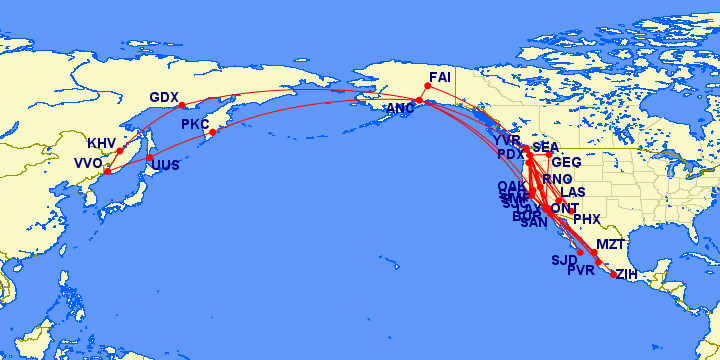 737-400:  MD-83\737-400 Charters: 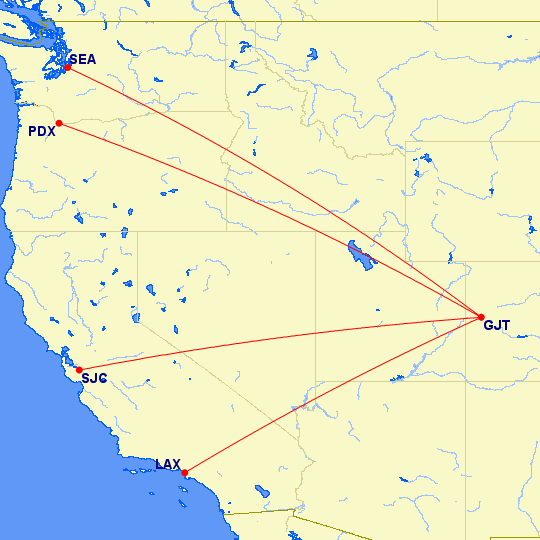 737-200 operated for ARCO Oil:  737-200C: 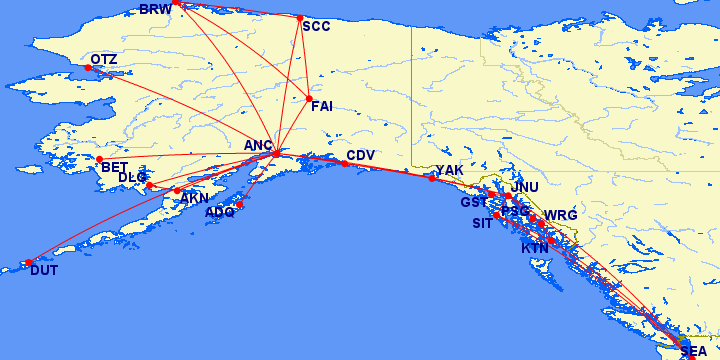 737-200C Charters:  727-22C operated by Reeve Aleutian Airways - RAA: 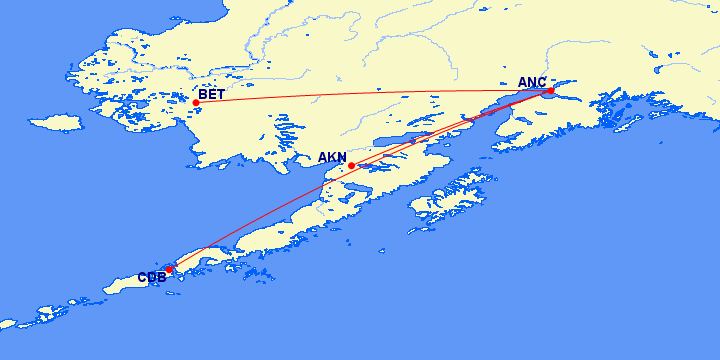 Fokker 28-1000\4000 operated by Horizon Air: 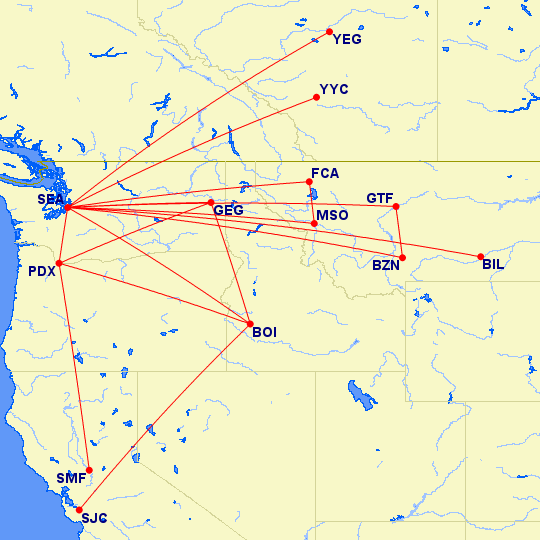 Convair 580 operated by ERA Aviation: 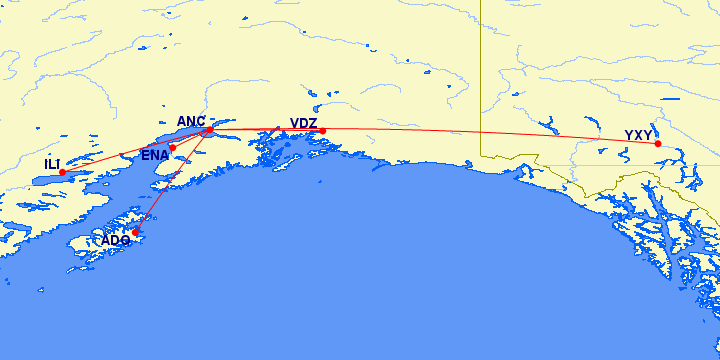 Convair 580 operated by ERA Aviation Charters: 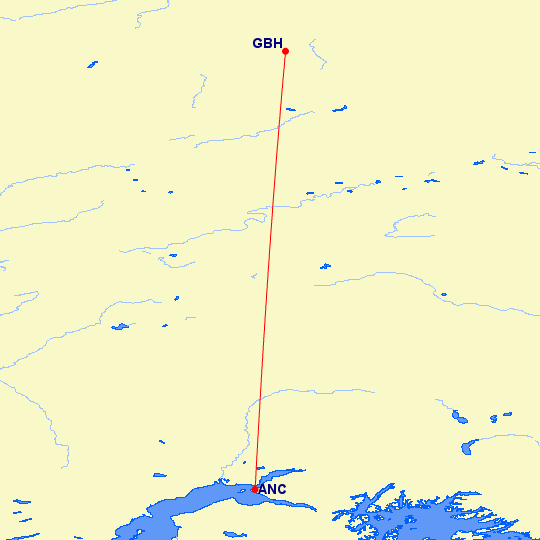 L-188 Electra operated by Reeve Aleutian Airways - RAA: 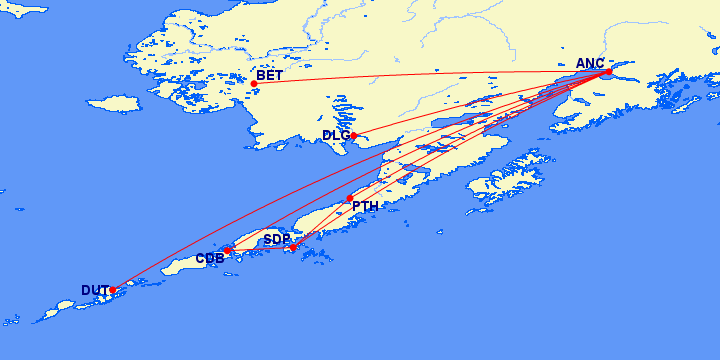 DHC-8-100\200 operated by Horizon Air:  Saab 340 operated by Penair: 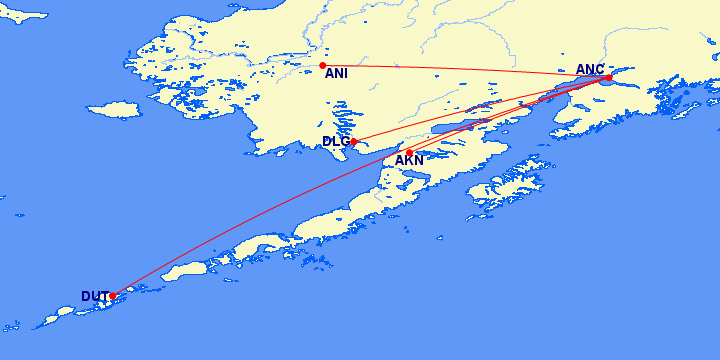 Metroliner III operated by Penair: 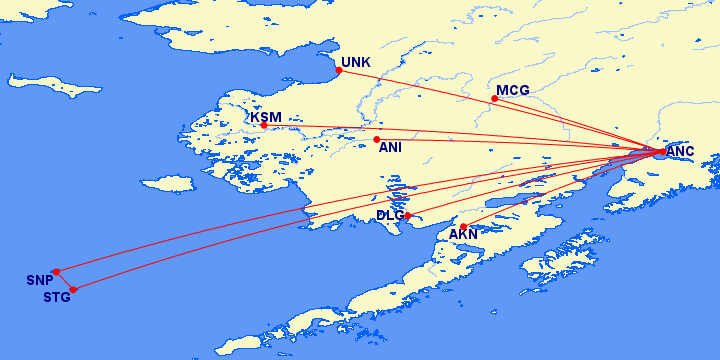 DHC-6-100\200\300 operated by ERA Aviation: 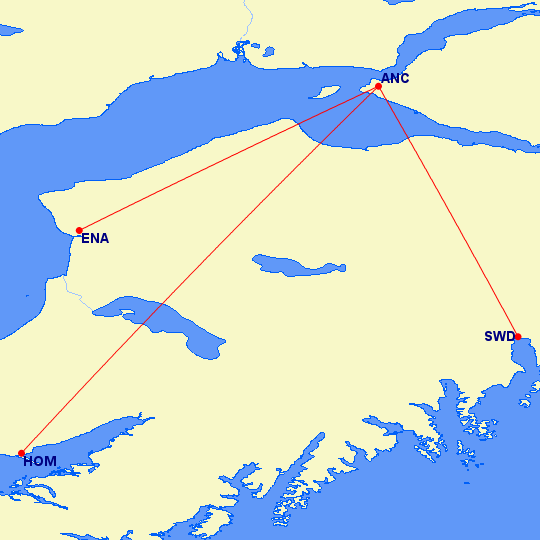 Cessna Caravan 208B operated by Harbor Airlines:  Download Alaska Airlines 1998 Flightplans Here Download Alaska Airlines 1998 Flightplans Here |
|
|
|
Post by chasensfo on Dec 30, 2022 22:37:23 GMT -5
\\Aeroflot 1998 v4 (30DEC22; added the FAIB 737-400 fleet by Christian Gold that I had somehow missed...) Aeroflot (1923 - Present) IATA: SU ICAO: AFL CALLSIGN: AEROFLOT Aeroflot is the national airline of Russia, based in Moscow(SVO), and was at one point during the Soviet era the world's largest airline. Founded in 1923, Aeroflot is one of the oldest airlines in Europe. The airline was founded from the need for a passenger airline from the successful air mail company Glavvozdukhflot, founded in 1921, bringing that need to light. Thus, Dobrolet was born, and scheduled passenger service began. Soviet Russia encompassed most of the land from Eastern Europe, to India, to China, and was a huge part of the Earth at the time. As such, the network of Dobrolet quickly expanded across the Soviet territory. In 1932, the airline adopted the name Aeroflot and began operating US-built DC-3s alongside some early-Soviet planes. A route to Berlin was started in a pact with Lufthansa, but this would, of course, be interrupted by WWII. During WWII, Aeroflot's fleet grew immensely as the transportation wing of the Soviet Air Force more or less, with Aeroflot flying some 1,595,943 missions in this role in WWII, with 46,000 missions in support of the Battle of Stalingrad alone. After WWII ended and the Cold War began, Aeroflot found itself with a massive fleet of aircraft and territory that the West had essentially cut off. This allowed Aeroflot to deploy divisions to various portions of the Soviet Union, such as modern-day Uzbekistan, Tatarstan, etc., and to face little competition as often the only air service to the outside world for these areas. The engineering race with the United States lead to the frequent development of new aircraft, and Aeroflot quickly added several dozen types to its fleet over the course of a decade or so, including early jets like the Tu-104 in 1956. Flights expanded all across Eastern Europe, and by 1964, Aeroflot served 100 cities from the Moscow area airports. From the various types of aircraft offered, Aeroflot began to build its modern fleet around the An-24, Tu-134, Tu-154, IL-62, and IL-86 aircraft, which would fly on for several decades. A cargo division was operated with various types including the An-124, An-12, and IL-76, and that is available separately as Aeroflot Cargo. In addition to passenger and cargo flights, Aeroflot operated specialized aircraft on dozens of missions in support of various government agencies and operated as the civil air authority more so than just an airline. The fleet grew to be the largest in the world. In 1983, a Korean Air Lines 747 on a multi-stop journey from Los Angles(LAX) to Seoul(GMP) strayed off course into Soviet airspace and was shot down with a massive loss of life. In retaliation, US President Ronald Regan banned Aeroflot from flying to the US effective immediately, a ban which would last 7 years. The airline continued to grow elsewhere until the early 1990s when the Soviet Union fell apart. The creation of dozens of independent nations resulted in Aeroflot's assets being divided among dozens and dozens of new air carriers, such as Air Ukraine, Air Uzbekistan, etc. The result was Aeroflot finding itself about the size of a major airline rather than the size of an entire air force, and the decision was made to focus on SVO, the primary international airport in Moscow, and to forfeit much of the domestic market to the new entrants while focusing on its lucrative international network. The red Soviet flag on the tail was replaced with the new triple-stripe Russian flag, and the registration prefix on the aircraft was changed to "RA-". In 1994, the airline was privatized with the government unloading 49% of the shares to the employees. Though massive tweaking and expansion of the route network occurred over the next several years, Aeroflot had begun domestic expansion by the late 1990s as well and began ordering Western aircraft for the first time since WWII. A310-300s and 767-300s were the first to arrive, followed by 737-400s and the first 777-200 in 1998. The 737-400s and 777-200s were delivered in a new livery, retaining the old basic fuselage but with a modern, colorful, and eye-catching tail design. Most of the long haul network was still flown by A310s in 1998, with a pair of 767-300s and a single 777-200(only flying to LHR and JFK) joined by a few IL-96s and several IL-62Ms. Tu-154Ms and Tu-154B-2s operated some long-haul flights down to Africa and towards Asia, often on multi-stop journeys. Much of the fleet performed multi-stop flights from SVO, including an SVO-SNN-MIA-MEX A310 route and an SVO-CAI-NBO-TNR Tu-154 route. A large fleet of IL-86s operated most of the European network, alongside Tu-134A\Bs. Aeroflot was still mostly flying Soviet-built aircraft at the turn of the century, but new Western planes would be arriving fast. All aircraft except for the 737-400 and 777-200 wore the standard early 1990s-introduced livery with the new Russian flag on the tail. In 2000, Aeroflot changed its name to Aeroflot-Russian Airlines. The airline began aggressive domestic expansion, with Western types taking over international routes allowing the Soviet planes to expand in that region. By the next decade, Aeroflot had replaced the vast majority of its soviet-built jets with Western planes such as A320s and A330s. Aeroflot went on to join the SkyTeam alliance and is today still the largest carrier in Eastern Europe, now operating at multiple Moscow airports again. Thanks to Fernando Kaiser and RetroAI member sakura, it was discovered that a lone YAK 42 remained in the fleet used for occasional charters from Moscow (SVO). Fernando has made realistic flightplans for this aircraft giving it a few charters based on photo evidence. IL-62 flights operated by Dalavia (in full Aeroflot colors) are included in that carrier's own flightplans. Flightplans by RetroAI member aleck, charters by Fernando Kaiser. All repaints are available, though not all on modern models: TFS 777-200 (FS9 Native): library.avsim.net/search.php?SearchTerm=tfs_b772er_aeroflot.zip&CatID=root&Go=SearchFAIB 767-300: library.avsim.net/search.php?SearchTerm=faib_767-300_afl.zip&CatID=root&Go=SearchRATS IL-96 by Christian Gold (FS9 Native): drive.google.com/file/d/1nrxC85tbAs1hu5dPmYx8kUnPHFxoRedo/view?usp=sharingTCAI IL-62M by Christian Gold (FS9 Native): drive.google.com/file/d/1SNqAZCjPHkJC3hIf8zl2tKKw72bTtOHC/view?usp=sharingTFS A310-300: www.juergenbaumbusch.de/?p=11946RATS IL-86 by Christian Gold: drive.google.com/file/d/1t-k5GfSHfJoct9gvJcxTglbp8dw4IiGo/view?usp=sharingTCAI Tu-154M by Christian Gold (FS9 Native): drive.google.com/file/d/1io3IyPW7i7Nk2l3t0VVnWKSxRROF0Z1x/view?usp=sharingTCAI Tu-154B-2 by Christian Gold (part of a large package with many textures; FS9 Native): drive.google.com/file/d/1q98igRT5d78PeR1bB4z1zXNixwditBRH/view?usp=sharingSBAI Tu-134A\B by Christian Gold (simply assign whichever model you want, A\B; FS9 Native): drive.google.com/file/d/1IaPhpbAB3KcSDxBEIJF2Sv-h03owA9KG/view?usp=sharingFAIB 737-400 fleet by Christian Gold (FS9 Native): drive.google.com/drive/folders/10S9I0PjfCp-C7cEXdGplEkR2_-QoohSUCIS YAK 42 by Christian Gold (FS9 Native): drive.google.com/drive/folders/1iGekz9T-fQg5XvHhV1Tsmg8WpMqs4E5g777-200:  767-300:  IL-96:  IL-62M:  A310-300:  IL-86:  Tu-154M:  Tu-154B-2:  737-400:  Tu-134B:  Tu-134A:  YAK 42 Charters:  Download Aeroflot 1998 v4 Flightplans Here Download Aeroflot 1998 v4 Flightplans Here |
|
|
|
Post by dlh747 on Dec 31, 2022 4:44:38 GMT -5
"TFS DHC-8 Horizon Air (May be used for -100\200 models; FS9 Native): (I have it but have 0 idea where it is from, please tell me if you have a link or author)" I think Boris Le Veve painted this TFS Horizon dash 8 and here is the link: www.flightsim.com/vbfs/fslib.php?do=copyright&fid=142594 |
|
|
|
Post by chasensfo on Jan 2, 2023 4:25:39 GMT -5
NOTE: As the airports used required FS9-P3Dv3, P3Dv4, and P3Dv5\MSFS versions of these plans, I was lazy and only updated the P3Dv5\MSFS plans. For now just change the relevant airports (like KGPI to KFCA and RJNA to RJNN) yourself please. \\Northwest Airlines 1998 v2 (01JAN23; Modified variations to fit the new fleet repaints by Micheal Pearson, segregated DC-9-31\32 as paints exist for both now, modified cruise speeds to AIG standard). Northwest Airlines (1934-2010) IATA: NW ICAO: NWA CALLSIGN: NORTHWEST Northwest Airlines was a major international US airline and one of the world's largest and oldest air carriers, based in Minneapolis (MSP). Northwest Airlines was one of the pioneering US airlines in early transocean and transcontinental flights, and as such, the carrier operated over 2 dozen aircraft types rapidly acquiring more efficient propliners and lost many aircraft along the way. The B337 Stratocruiser and the early Douglas props were the mainstays of the early fleet, along with the Lockheed Electra. While most US airlines focused on the Northeast and West Coast, Northwest decided to focus on the Midwest USA and Pacific Northwest, along with Alaska. To better advertise Northwest's stature as one of the leading US carriers in the Pacific, the airline rebranded in 1954 as "Northwest Orient Airlines". The airline developed a large hub in Detroit (DTW) along with focus cities and smaller hub operations in Boston (BOS), Seattle (SEA), and Portland (PDX) while also growing rather large in Japan, Florida and Chicago. Northwest was at the front of the jet age with early DC-8s, 707s, 727-100\200s, and 747-100s and -200s along with DC-10s between 1960 and 1973. By then, the airline was Pan Am's main US competitor in the Pacific and Europe and Northwest had developed Tokyo (HND) into an intra-Asia hub with traffic rights to carry passengers to about 10 different countries. In the early 1980s, Northwest began adding 757-200s to the fleet. In 1986, Northwest announced that it would merge with rival MSP-based Republic Airlines, and ahead of the merger, the carrier dropped the "Orient" branding and began flying as "Northwest Airlines". The Republic merger helped Northwest double in size at both MSP and DTW while also adding a new hub in Memphis (MEM) and a focus city in Milwaukee (MKE), where Northwest was already a large competitor. The merger gave Northwest a huge DC-9 fleet and a boost to its 727-200 fleet along with some MD-80s. CV-580s and 757-200s with RR 535C engines were briefly operated, with the CV-580s reassigned to MKE for the brief hub operation there. Northwest also inherited the "Republic Express" operation, which it merged into its new Mesaba Airlines-operated Northwest Airlink system, which at the time mostly consisted of Beech C99s and Fokker 27s. By 1989, Northwest pulled the plug on the MKE prop operation and retired the Convairs, while the ex-Republic 757s made it to the start of the 90s. A new "bowling shoe" livery was introduced in late 1989, which initially had the engines painted grey on the DC-10-30\40s, 757s, and A320s, of which Northwest was one of the first operators putting the type into service late that same year. Northwest also became one of the first operators of the 747-400 in 1989, first deploying the aircraft on familiarization flights to Phoenix (PHX), a popular "snowbird" destination for MSP customers during the harsh Midwest US winters. By 1990, after just a few airplanes had been painted, Northwest reverted to white engines and a white belly stretching higher up the fuselage which became standard. From 1986 to 1992 or so, Northwest had a total bastard fleet with various hybrids featuring aircraft in both Republic liveries, several variations of the old Northwest livery including some bare-metal DC-9s and aircraft still wearing "Orient" titles, and both versions of the new livery along with a sizable number of planes in the old colors but with the new tail. In 1993, KLM and Northwest Airlines formed the first formal global alliance, and KLM began flying to Northwest's hub cities while Northwest began adding flights to AMS from various points across the US, including MSP, DTW, MEM, PHL, BOS, SEA, PDX, IAD, EWR and even onward to points in India and Asia. From 1994, a KLM\NW alliance badge was added to all KLM and Northwest Airlines aircraft. In 1998, the airline began celebrating its 50th anniversary of Transpacific flying with a "50 Years Bridging the Pacific" campaign, and a special large decal was added to each aircraft, usually by the nose on one side of the fuselage and aft of the titles on the other side. This was followed by a special livery dubbed "The World Plane", which was a 747-400 decorated in drawings made by children across the globe at Northwest destinations depicting their city. By late 1999, Northwest removed the KLM\NW decal and "50 Years Bridging the Pacific" decals from the fleet and slightly modified the titles, reverting back to the 1989 livery more or less. Initially, aircraft were repainted into this "new" livery variation, but at some point, the carrier settled on just pulling off the decals leaving much of the fleet with large circular stains where the alliance logo once was (with some flying into the late 2000s like that). Northwest had always done a lot of charter work, and by the late 1990s, the airline had a special fleet of VIP 727-200s regulated to charters for teams in the National Basketball Association (NBA) and National Hockey League (NHL). DC-10-40s and 747-100s were also used on these flights, while 747-100s also flew some NFL charters but were mostly regulated to US Military charter work. 747-200s and 747-400s did most of the Pacific flying, including Hong Kong (HKG) to Minneapolis which was the longest route in the world at the time. DC-10-30s did most flights to Europe and the AMS hub, while DC-10-40s were used on flights to the US West Coast and some high-density domestic routes. The small MD-80 fleet mostly flew to secondary West Coast cities like Sacramento (SMF), Tucson (TUS), and Ontario (ONT) in lieu of the A320, which flew most sectors over 3 hours along with the 757-200s. The DC-9 fleet and 727s mostly flew around the Eastern US, though the DC-9s had a few routes out West to Montana and the 727 was used on services to Reno (RNO) and Spokane (GEG). Brand new A319s were starting to join the fleet in early 1999, ferrying from Toulouse (TLS) to Minneapolis (MSP) where they began to gather on the various hangar aprons. Northwest was codesharing with various airlines, including Alaska Airlines who was aggressively operating excessive West Coast frequencies at the time, while Northwest also codeshared its "Airlink" flying with the independent operations of Trans States Airlines in LAX and Business Express Airlines (BEX) in BOS respectively in addition to the in-house Northwest Airlink flying operated by Mesaba and Express Airlines I. By this time, MEM was rather dead outside of a few arrival and departure banks that fill up the terminal 3 times per day or so. Otherwise, there were just occasional flights to major cities outside the banks, especially to the US West Coast. MEM was no longer seeing Northwest aircraft larger than the 757 regularly. DTW and MSP were huge hubs, also operating mostly during large banks that fill most every gate, but with frequent departures in key markets between banks. NRT fills up with 747s each morning and early afternoon during a big hub bank, and AMS also has a large morning and afternoon bank full of DC-10s. Other than a few odd routes like one between Tampa (TPA) and Montego Bay (MBJ), Northwest had very few routes not connected to a hub or focus city. In 2002, Northwest adopted its final livery and soon after, the KLM\NW alliance (which had also grown to include Continental) became SkyTeam, with Northwest obviously being a founding member. When the airline merged with Delta in 2010, it was still operating many of the classic aircraft used in the late 1990s. But Delta swiftly retired most of these planes and chose to build up DTW while making MSP mostly a regional and transcon hub, with most departures going to Delta Connection carriers and few long-haul routes beyond AMS and NRT. These plans include some Airbus ferry flights from TLS to MSP along with realistic charters utilizing the VIP 727-200 fleet (which I have mostly visiting cities that wouldn't see NW 727s otherwise) and extra DC-10-40s and 747-100s not used in the scheduled flights. Once in MSP, the A319s replicate real test\training\familiarization flights to St. Cloud (STC), and Fargo (FAR) shooting missed approaches and also fly to DTW and MEM, but most will sit on the hangar ramp in MSP. I have also added 2 simulated maintenance ferry flights with 747-200s from MSP-DLH in Northern Minnesota a short hop away, as this was done at the time with NW operating a hangar there. Charters include realistic ferry flights, and NFL charters all support real games occurring on Sunday, Monday, or Thursday night. For realistic parking, you will need to make separate aircraft.cfg entries for these planes, using "atc_parking_codes=XNWA; atc_parking_types=RAMP" for the ferry flights, "atc_parking_codes=VIP; atc_parking_types=RAMP" for sports charters, and "atc_parking_codes=DOD; atc_parking_types=MIL_CARGO,RAMP" for military charters. Livery breakdown: As I already had made my own variations off paints by others to represent NW in my sim, I simply dragged and dropped a lot of Mikey's paints, so the titles don't match except for some of the DC-9s and 747s. 1990 = No KLM\NW Alliance Logo nor '50 Years Bridging the Pacific' titles (in 1998\99, some aircraft began appearing briefly in this "clean slate" bowling shoe variation again), 1993\4 = KLM/NW alliance logo (a handful of jets still looked like this in the late 90s), 1998 = KLM\NW Alliance Logo + '50 Years Bridging the Pacific' titles (most aircraft). Flightplans by cmd320 and myself. All repaints are completed: FAIB 747-400 fleet by Michael Pearson: mpai4fs.com/2022/12/31/northwest-airlines-747-400/FAIB 747-200 fleet by Michael Pearson: mpai4fs.com/2022/12/31/northwest-airlines-747-200/FAIB 747-100 fleet by Michael Pearson: mpai4fs.com/2022/12/31/northwest-airlines-747-100/EVAI DC-10-40 by Michael Pearson: drive.google.com/drive/folders/1i5iYA6pWgOhhurCa-8eNWSlKJmzHM3-lAIM DC-10-30 by Jason King: www.dropbox.com/s/9hf7z3xj37jq6ud/NWA%20OC%20DC10-30.rar?dl=0AIG 757-200 fleet by Micheal Pearson: mpai4fs.com/2022/12/31/northwest-airlines-757-200/AIA MD-82 fleet by Michael Pearson: mpai4fs.com/2022/12/31/northwest-airlines-md-82/AIA 727-200 fleet by Micheal Pearson: mpai4fs.com/2022/12/31/northwest-airlines-727-200/FAIB A320 fleet by Michael Pearson: mpai4fs.com/2022/12/31/northwest-airlines-a320/FAIB A320 by Ranmori Scythe (1994 version): drive.google.com/drive/u/1/folders/1COEl45QUqGt7u17W5po-bKU___9Jldo8FAIB A320 by Chris Gorodetzky (FS9 native): drive.google.com/drive/u/1/folders/1cbyNhTwJn7WEilh_ifRYggtsJhjetrdoFAIB A319 fleet by Michael Pearson: mpai4fs.com/2022/12/31/northwest-airlines-a319/FAIB A319 by Chris Gorodetzky: drive.google.com/drive/u/1/folders/1a8GnScoYA5f4qlEvyJMrhh9fA3ZXMEYmAIG DC-9-50 fleet by Michael Pearson: mpai4fs.com/2022/12/31/northwest-airlines-dc-9-50/AIG DC-9-50 (by Christian Gold\APG Studios; 1994 version; FS9 native and part of a package): drive.google.com/drive/folders/1QUe9V4QqTyiO15IfuO2S0dTS1dnYOzaLAIG DC-9-40 fleet by Michael Pearson: mpai4fs.com/2022/12/31/northwest-airlines-dc-9-40/AIG DC-9-30 fleet by Michael Pearson: mpai4fs.com/2022/12/31/northwest-airlines-dc-9-30/AIG DC-9-10 fleet by Michael Pearson: mpai4fs.com/2022/12/31/northwest-airlines-dc-9-10/AIG DC-9-10 (1994 version; FS9 native): library.avsim.net/search.php?SearchTerm=northwest_airlines_oc_dc-9-14_n8908e.zip&CatID=root&Go=Search747-400:  747-100\200:  747-200 Maintenance Ferry Flights: 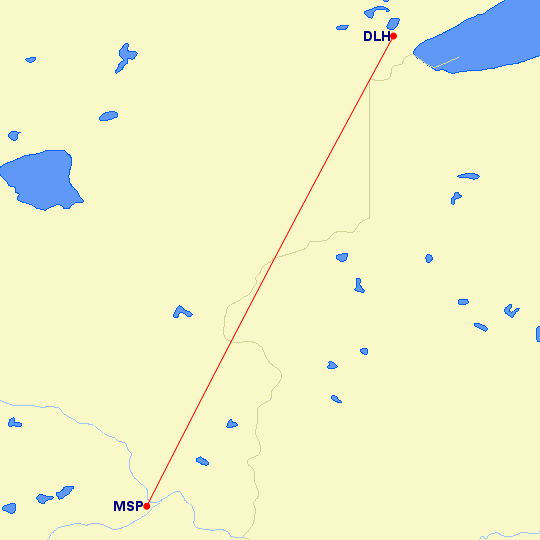 747-100 NFL Charters: 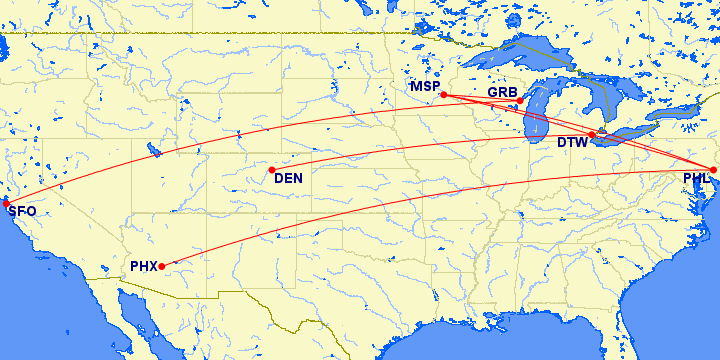 747-100 US Military Charters: 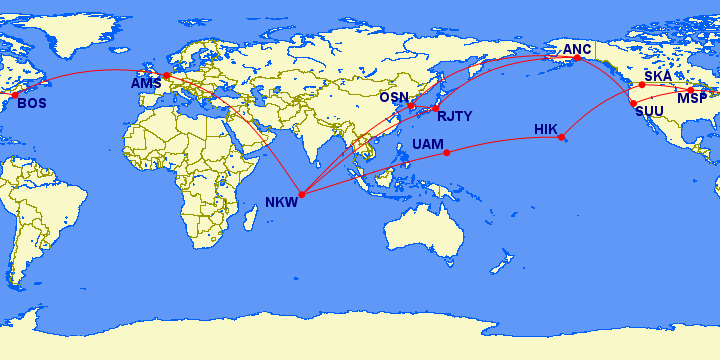 DC-10-40: 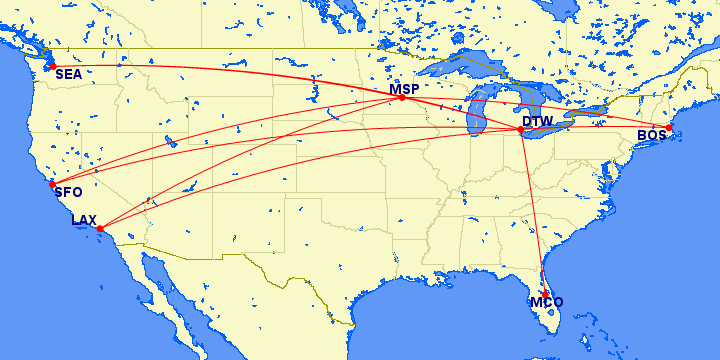 DC-10-40 NFL Charters: 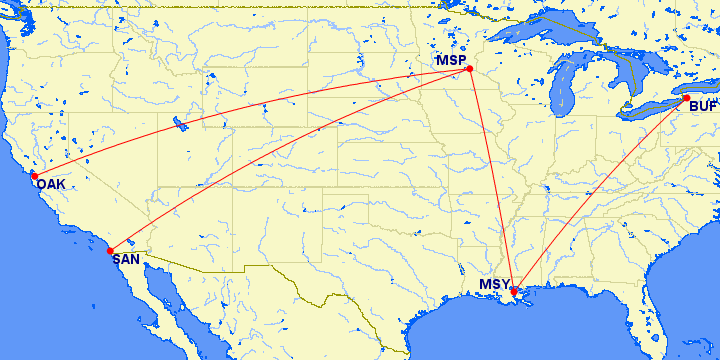 DC-10-30: 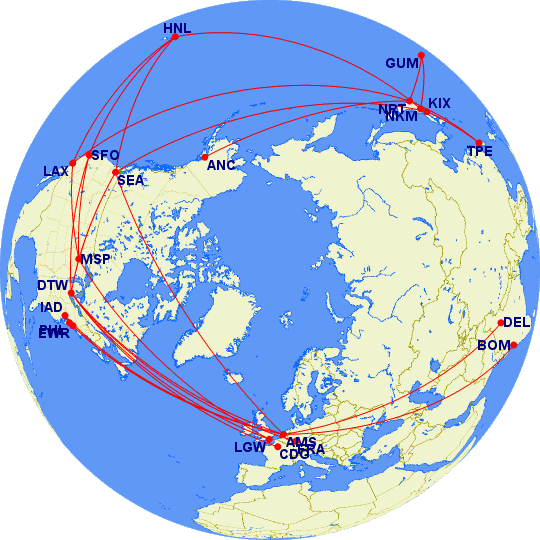 757-200:  727-200:  727-200 NBA Charters: 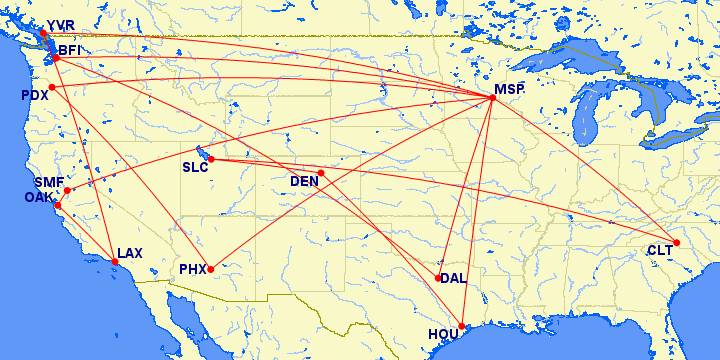 727-200 NHL Charters: 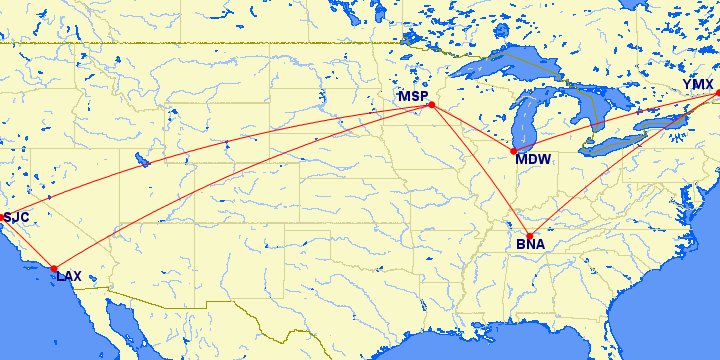 MD-82:  A320:  A319 Factory Delivery Flights:  A319 Training and Test Flights: 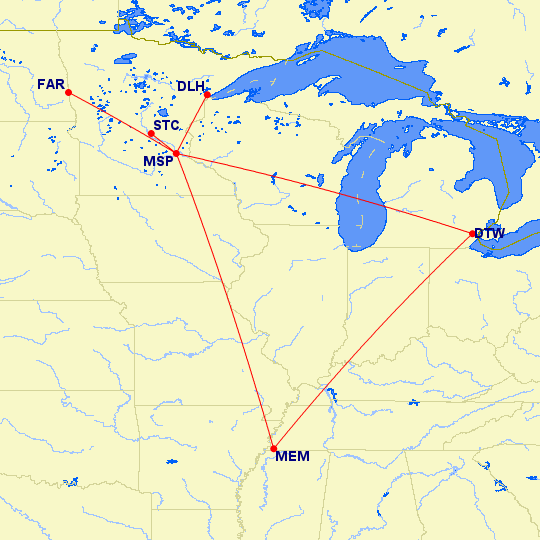 DC-9-50: 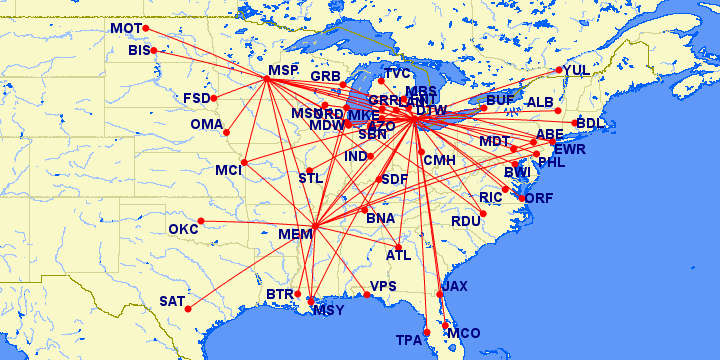 DC-9-30\40 (missing seasonal MSP-FCA): 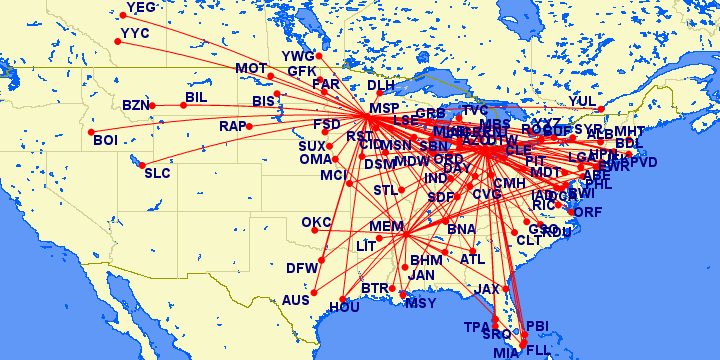 DC-9-10:  Download Northwest Airlines 1998 v2 Flightplans Here Download Northwest Airlines 1998 v2 Flightplans Here |
|
|
|
Post by chasensfo on Jan 4, 2023 19:02:48 GMT -5
\\Swiss World Airways 1998 v2 (03JAN23; re-did the flightplans using the actual schedule as the previous plans were representative, changed cruise speeds to AIG standard.) Swiss World Airways (1998) IATA: SO ICAO: SWO CALLSIGN: SWISSWORLD Swiss World Airways was a very short-lived Geneva (GVA)-based long haul Swiss airline that only operated for just 3 months. Swiss World Airways was founded in 1997 with plans to expand on long-haul routes that Swissair had recently ended. As Swissair was running into trouble by the late 1990s and already shrinking its network, and as US airlines had limited service in the region, the founders of Swiss World Airways hoped that a full-service nonstop link between Geneva and the US would quickly attract passengers who otherwise would be connecting in Zurich (ZRH) to fly on Swissair, Delta, Continental or United. Flights began in September 1998 with a single 767-200 leased from Ansett Australia flying between GVA and Newark (EWR) 6 days per week with no flights on Wednesday. Shortly after starting operations, the airline also leased a 757-200 from Air Holland and flew it to Shannon (SNN) for painting, followed by flying the aircraft Lasham, England (EGHL) for short-term storage as it awaited entering service on routes that were never announced. Swissair responded to the new service with a short-lived route between Basel (BSL) and EWR, operated by A310-300s, meant to siphon away traffic from the start-up carrier. Swiss World Airways quickly ran into trouble with Ansett for not making lease payments on the 767, and Ansett ultimately repossessed the aircraft in EWR between revenue flights! With the 757-200 not yet in service, this resulted in the abrupt cancellation of all services and the immediate shutdown of the airline. The 757 was flown back to Amsterdam (AMS) to be returned to Air Holland, never having operated a revenue flight for Swiss World Airways. As of 2023, both aircraft are still active as freighters, with the 767 flying for Star Air and the 757 for FedEx. The 767-200 flies the carrier's real scheduled flights in these flightplans, while the 757-200 is included operating during the week AMS-SNN-EGHL-AMS to represent its time with the carrier and provide some unique eye candy of the late 1990s for users who cross paths with the airplane. As there is photo evidence of the 767 in ZRH a few times, likely for crew training, I have included a training flight to ZRH on Wednesday when the scheduled flights do not operate. Thank you to Miguel Ceballos for discovering the real flight schedule as, despite the carrier being a member of IATA, the flights were not listed in the September 1998 OAG. A repaint is needed for the AIG 757-200, while the FAIB 767-200 by Daniel El Meddeb may be found here: drive.google.com/file/d/1oHlXaX0E3aVr17FDMTrbyaU14h7cTZBf/view?fbclid=IwAR20xonKa5f4XbmAC1T3raPYHIQPl-Gjm-aMTvUdhePNqo01DhKpiy7phHk767-200: 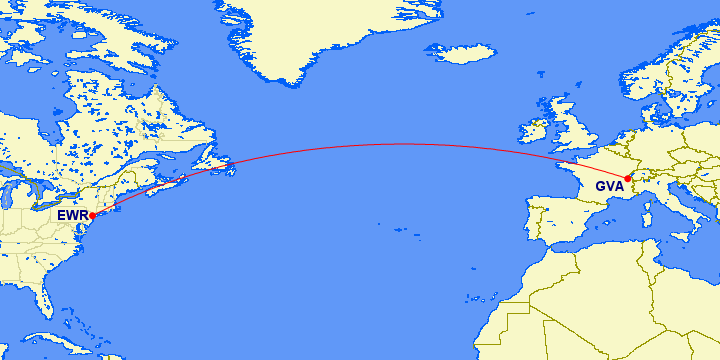 767-200 crew training:  757-200 pre-service entry:  Download Swiss World Airways 1998 v2 Flightplans Here Download Swiss World Airways 1998 v2 Flightplans Here |
|






















































































